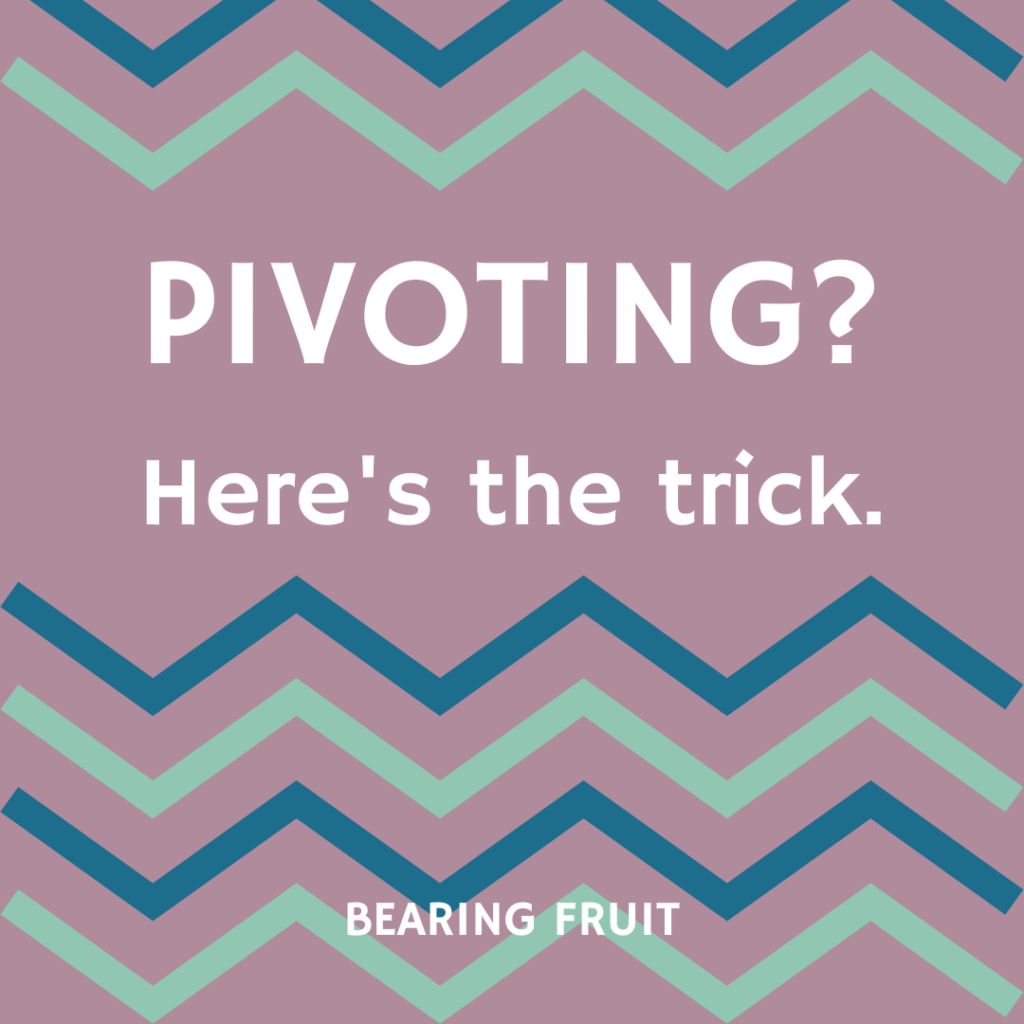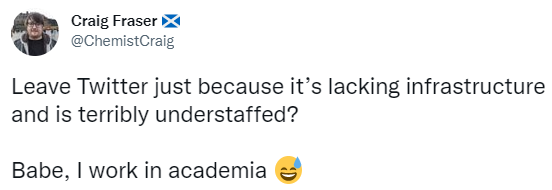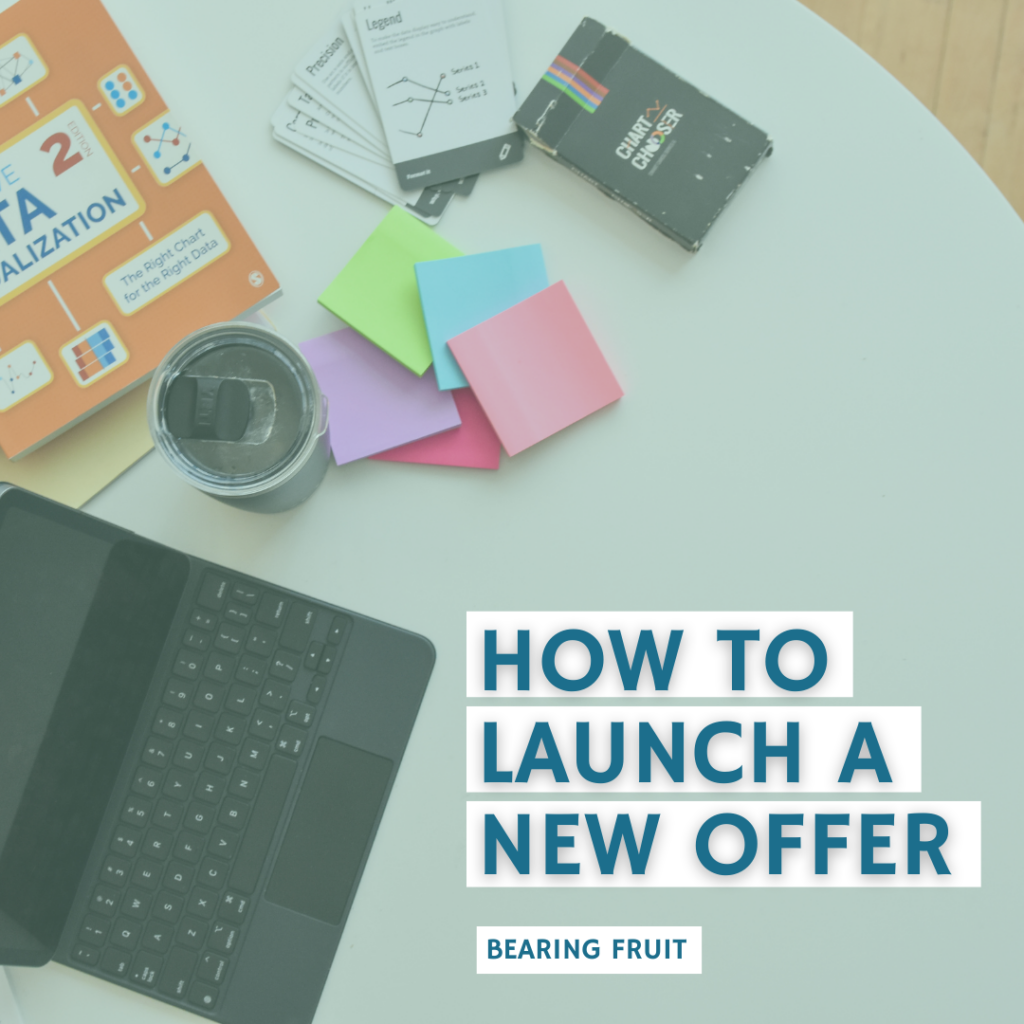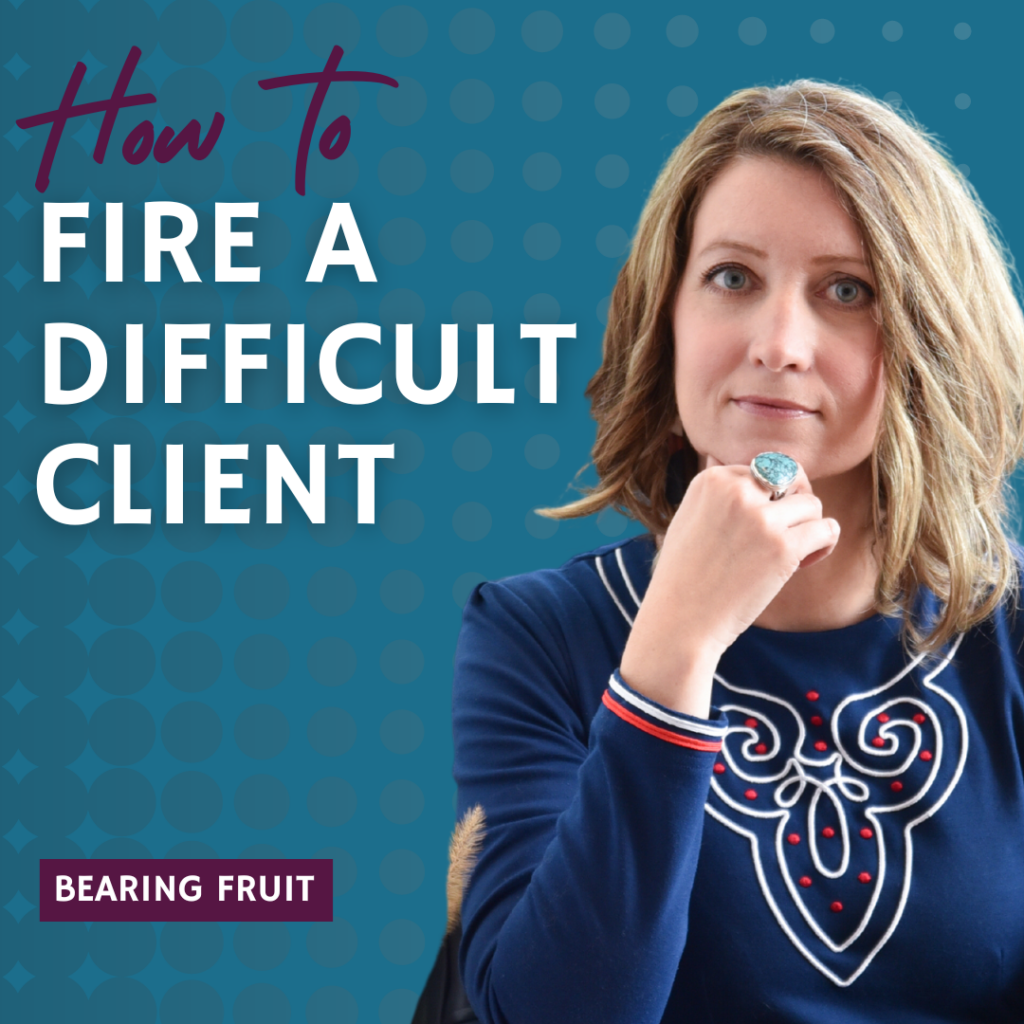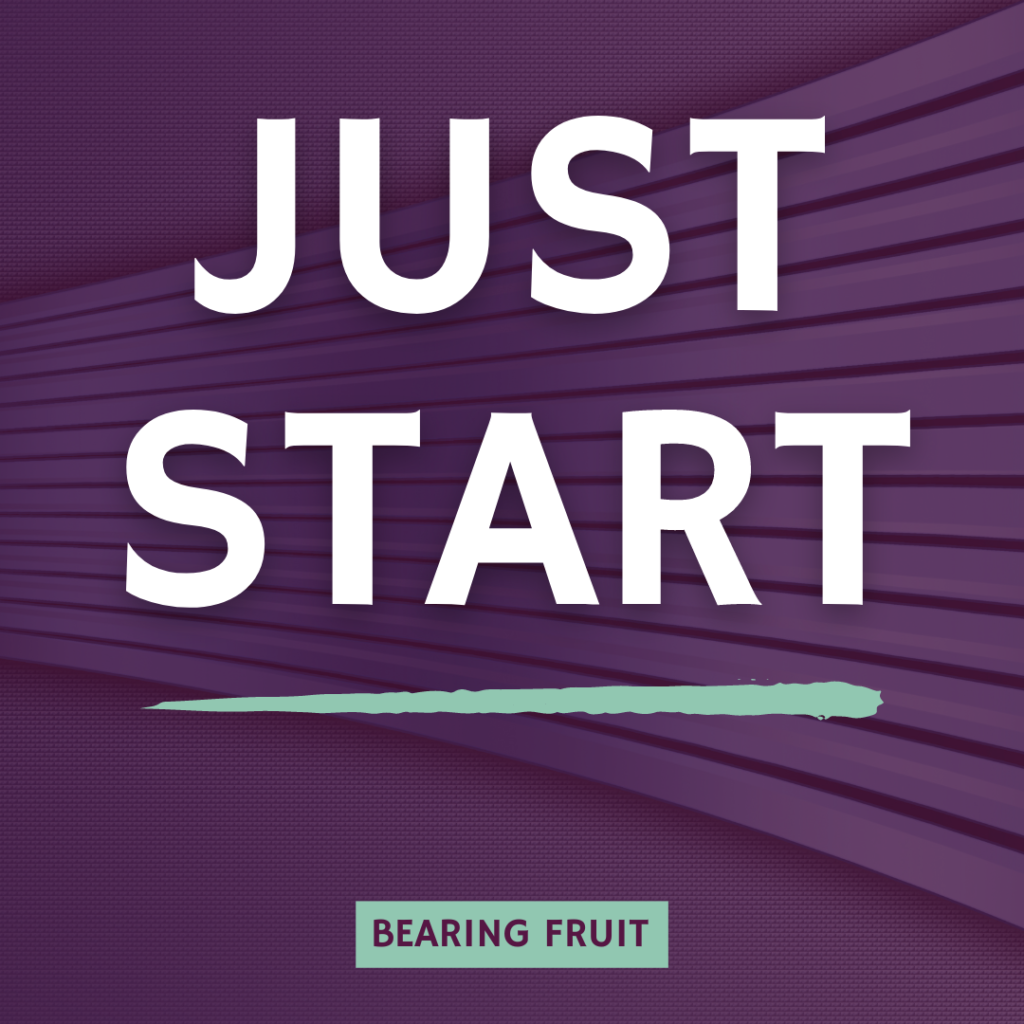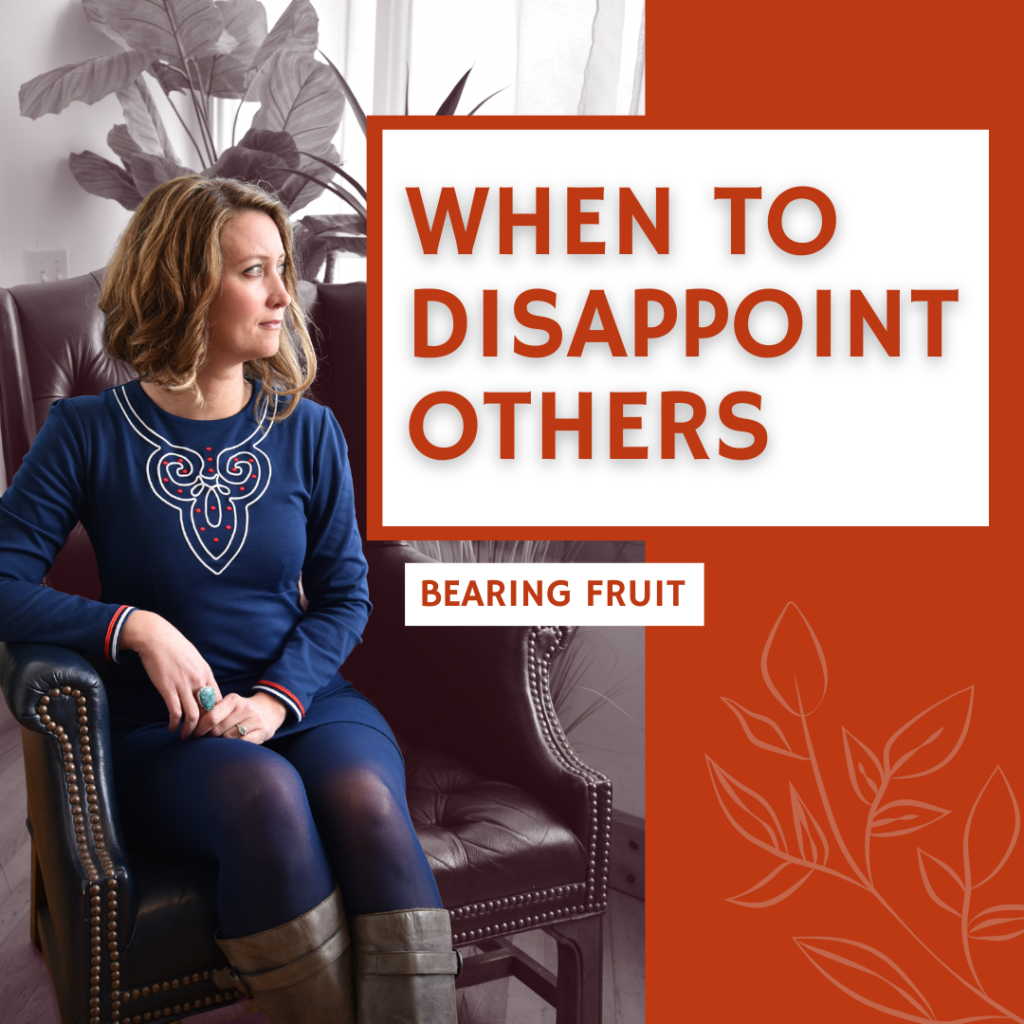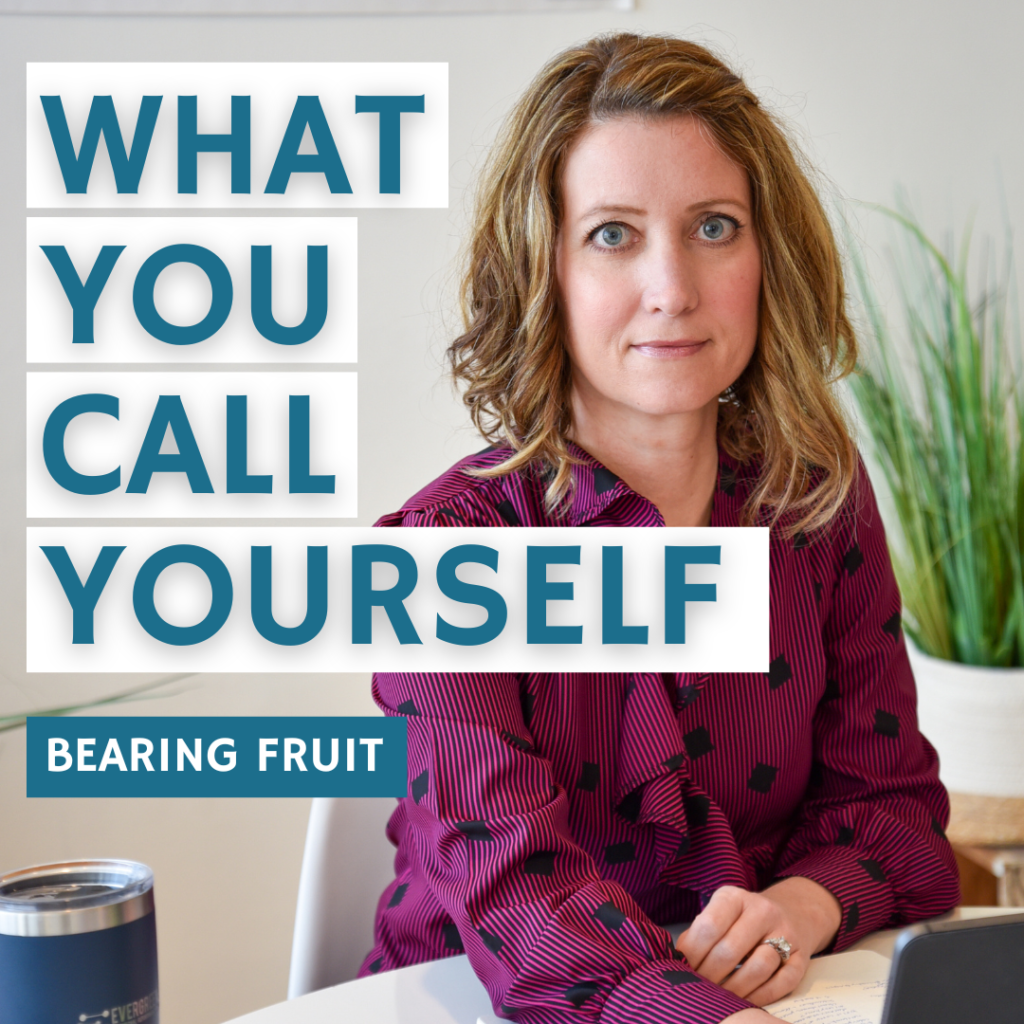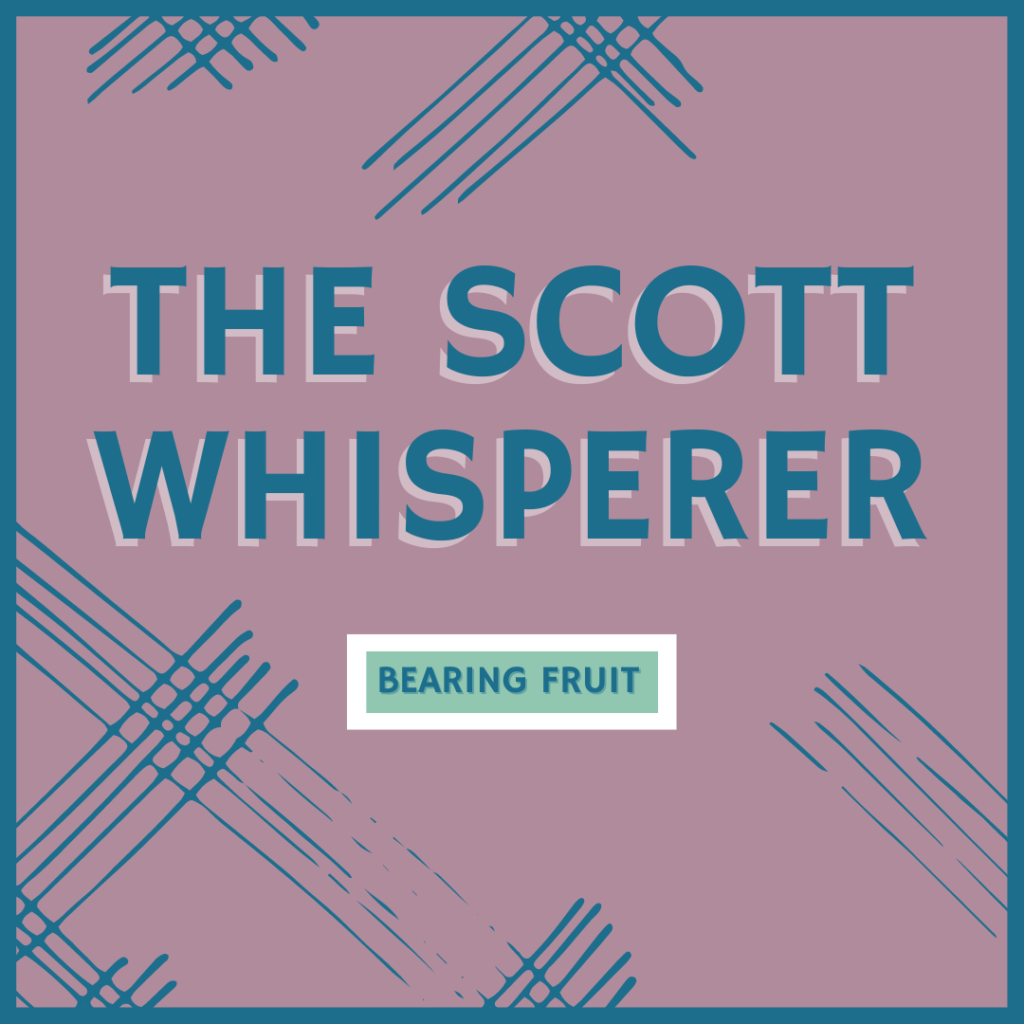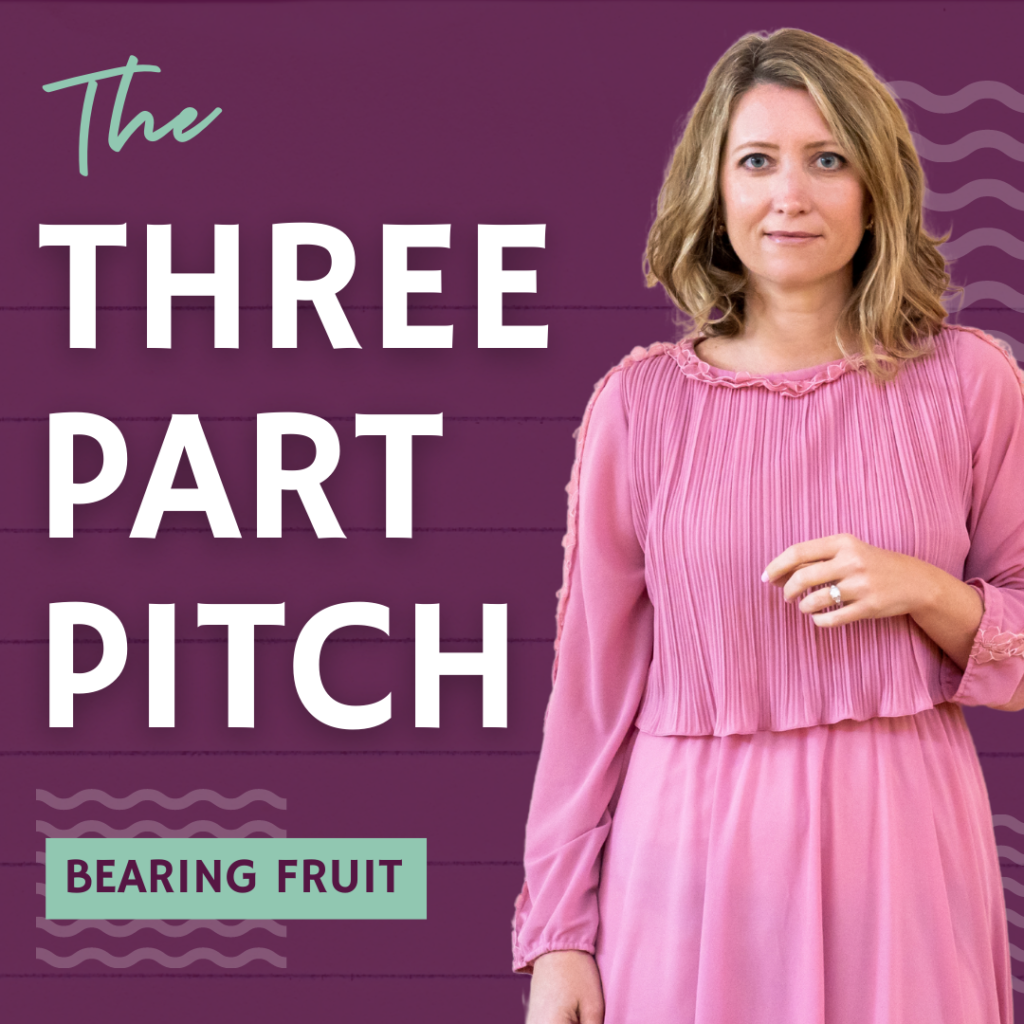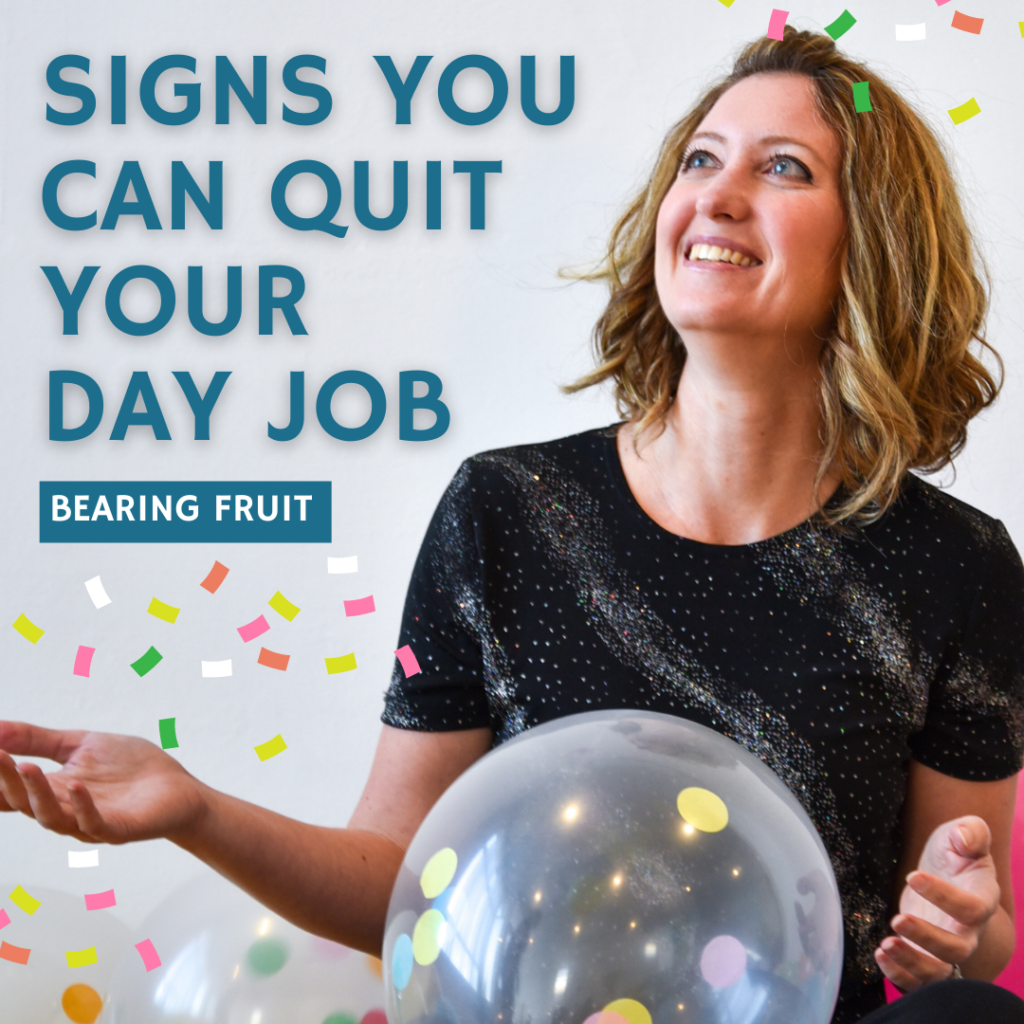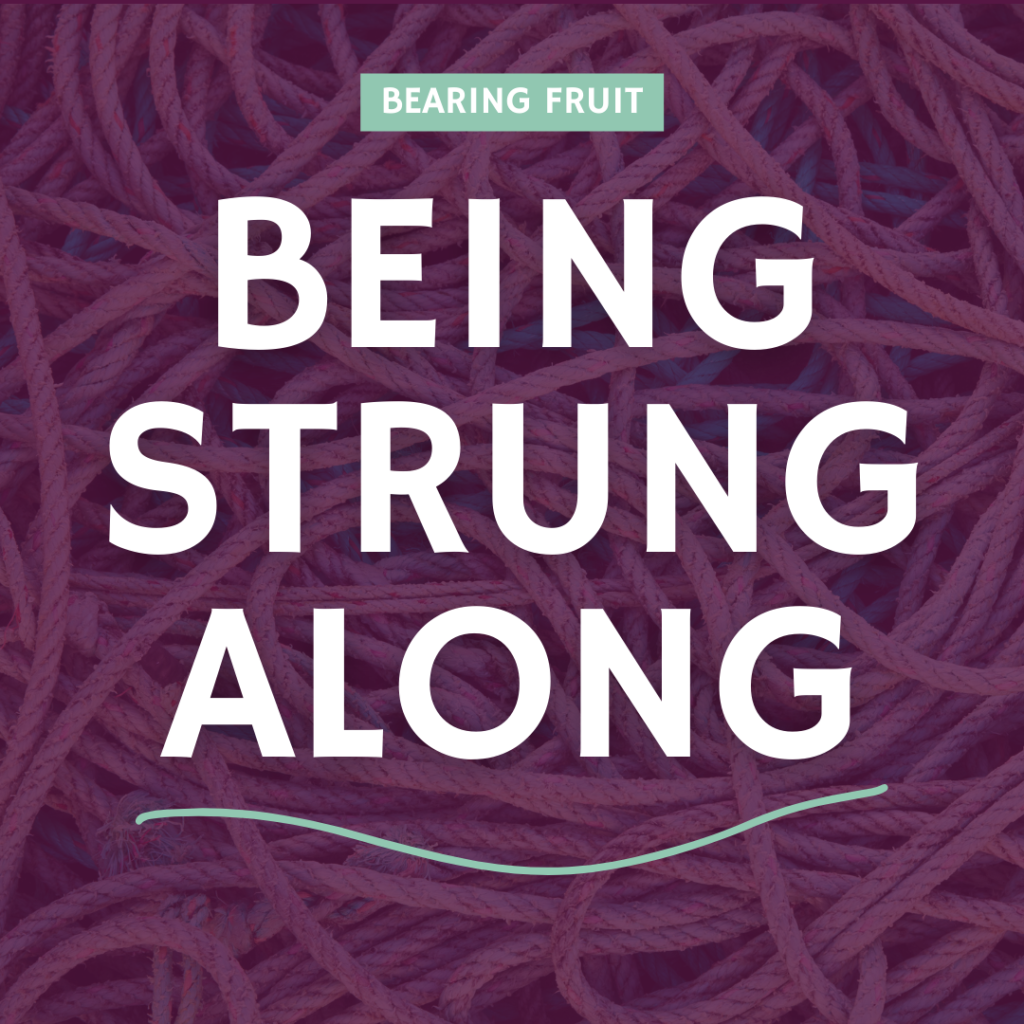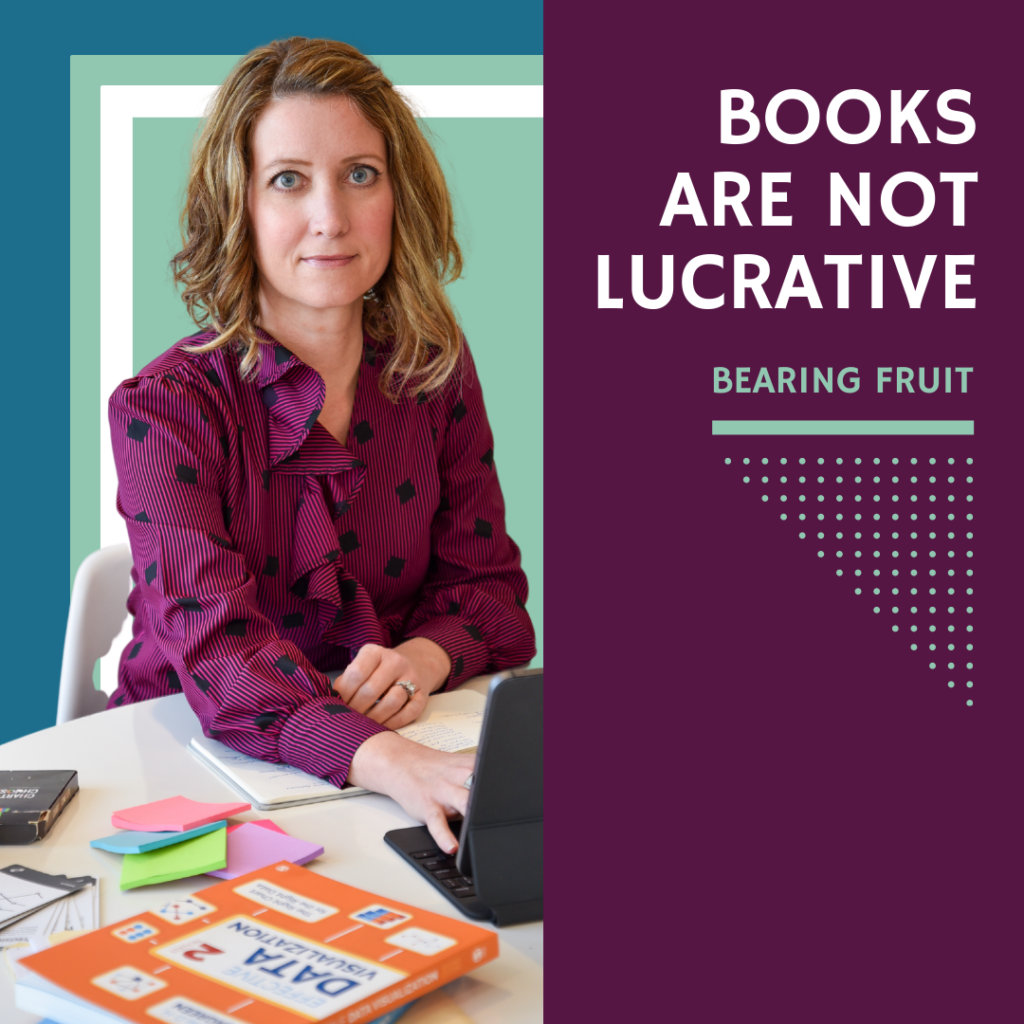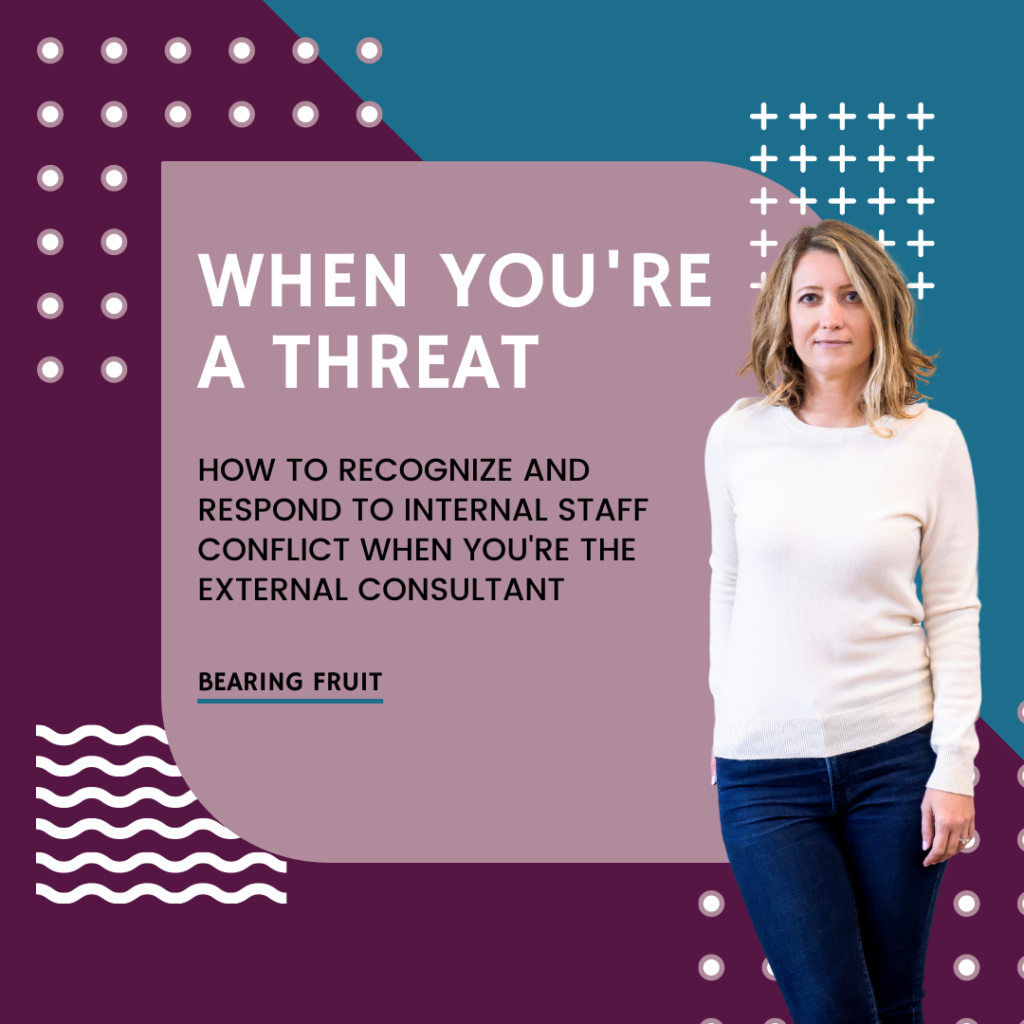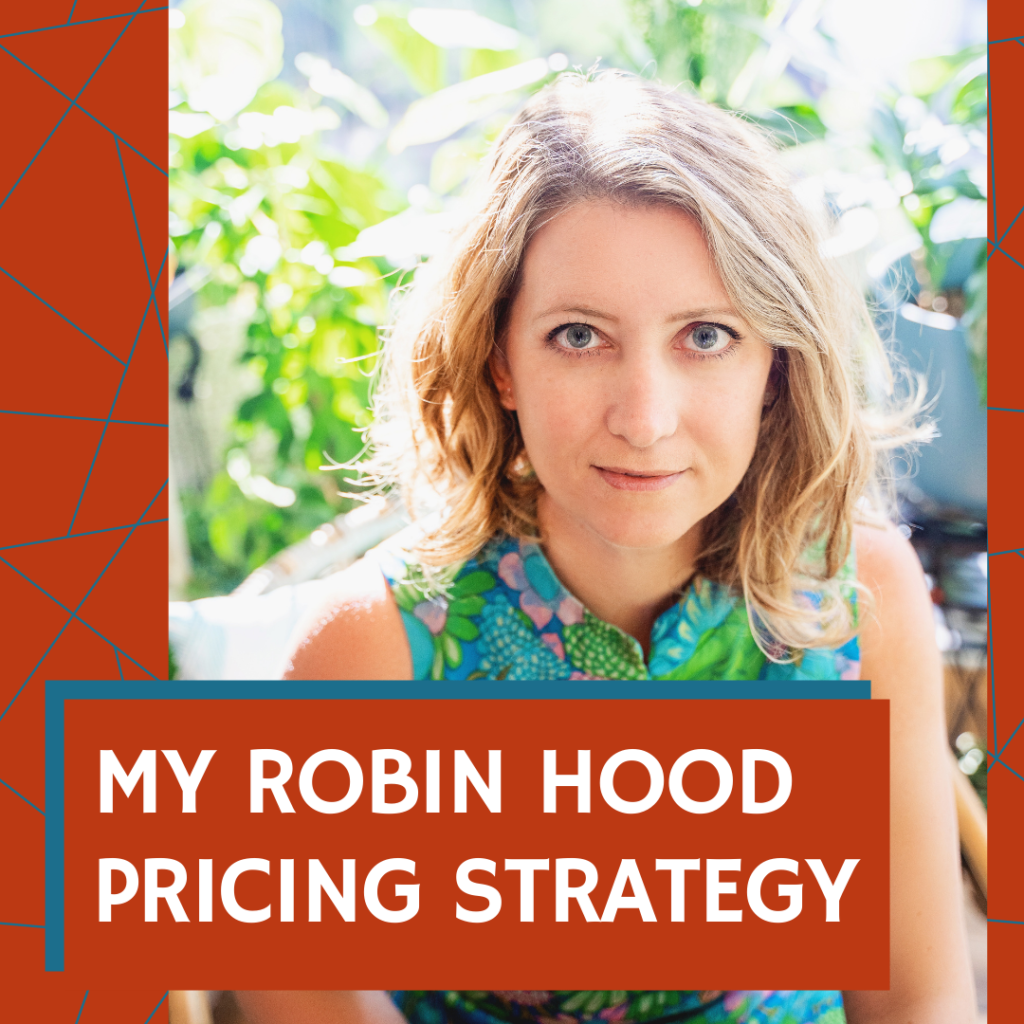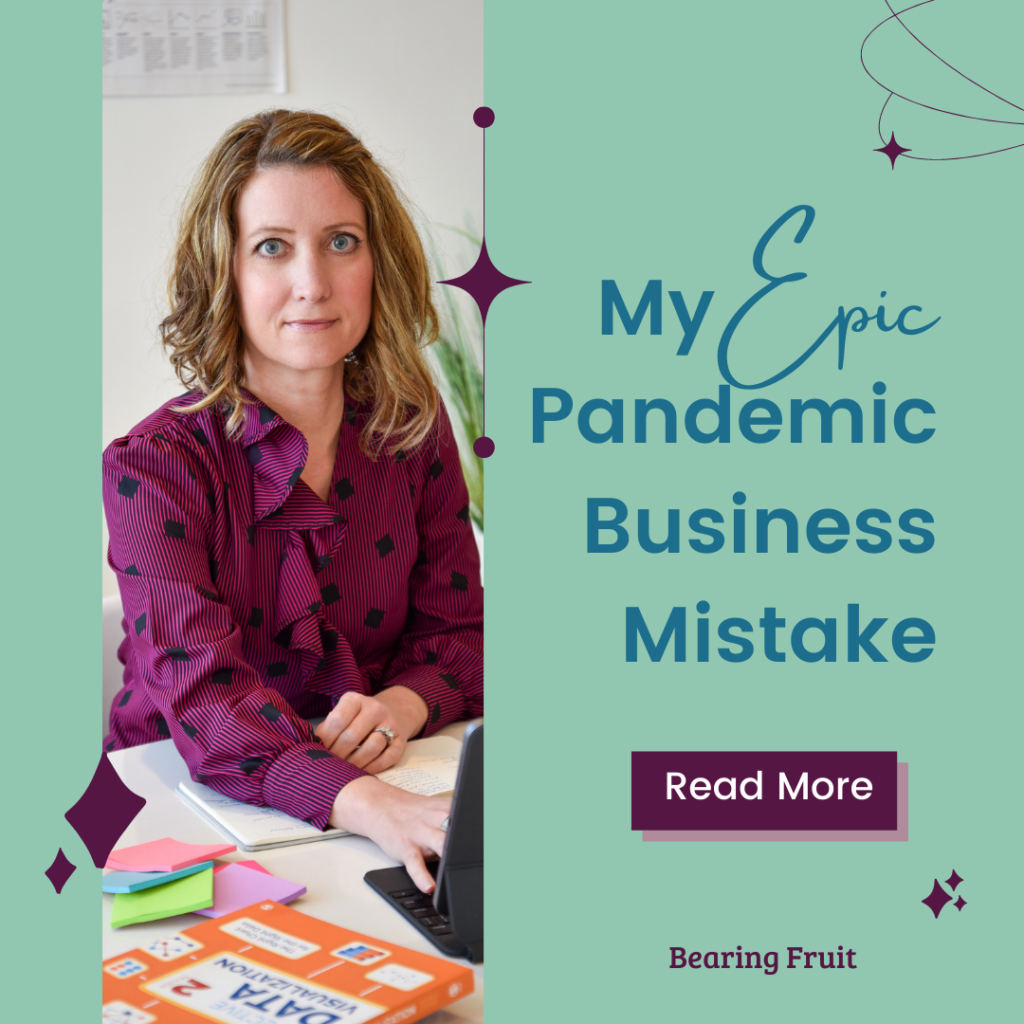Pivoting? Here’s the Trick.
I love a good career pivot. The bigger the pivot, the louder I cheer. Probably because I’ve done so many 180 pivots in my lifetime.
Pivots can be scary because it feels like your gonna burn the house down and start over. But, I promise, you’re only doing reno.
I watched Siobhan 180, from being an evaluator to becoming a realtor. You used to collect data! Now you sell houses! I love it!
And, now that I think about it, I’d prefer a realtor that understands data and forecasts and trends. Wouldn’t you?
Coming from a data background is an asset.
A selling point.
Let’s say you’re in academia and you want to start your own business as a personal trainer. That’s a 180 pivot. Rad!
I suspect you might feel scared to make such a huge move because (1) you think people will think you just failed at academia and (2) your reputation as a personal trainer is non-existent. You’re starting from scratch.
But are you?
No, my friend. You have related experience. Lean on that.
See what I mean?
Your lunch time workouts in the student rec center, where the ventilation and air conditioning have always been so-so. That’s related experience.
Your “summers off” hiking mountains. Those become part of your branding.
All academics are essentially running their own businesses out of their tiny offices. You know how to budget. You know project management. You’re already used to putting in long hours, trusting that the far-distant payoff will eventually arrive.
You’ll be fine.
Don’t hide your past like it never happened.
Put it on the front page.
Indeed, part of what makes my data visualization workshop so effective is what I learned from my early days as a kindergarten teacher.
Like classroom management skills, to get hundreds of people to stick with me at the same time.
And curriculum design, to know how to make the content engaging.
And emotional intelligence, to sense when a particular group needs an activity or a break.
AND OF COURSE MY TEACHER VOICE.
Part of what made me an effective teacher was what I picked up waiting tables at the neighborhood pub in college.
I got good at seeing what people need before they see it themselves.
I learned all about smiling on the outside while thinking “go f yourself” on the inside.
All waitstaff have outstanding multitasking skills – and all teachers need these, too.
And the talents I learned waiting tables, I use in my data visualization work now.
Your pivots don’t have to be so big.
Maybe you’re thinking about just a 45 pivot – offering a new service.
Let’s say you’re a social worker who wants to start a podcast. Awesome!
You’ll pull from the patterns you’ve seen among your clients to develop the content.
You’ll get ideas for each episode’s structure based on the podcasts you already listen to when you take Pixie for walks.
Yes, you’ll have to figure out a few logistics like what type of mic to buy and how to edit – but those are just logistics. You’ve already got the hardest parts under control.
No matter the size of your pivot, you have the skills and talents and experiences that’ll bridge you.
You aren’t ever starting from scratch.
Sometimes we need help identifying our bright sides and how they’ll contribute to our next move. I can help. I learned how to pull out the best in everyone when I was a teacher. If you need an outside perspective on how to pivot, shoot me an email.
And enroll in Boost & Bloom. I’ll walk you through the logistics, step-by-step. And the whole community will cheer you on.
So, what did you learn from a past job that is surely contributing to your awesomeness in your current job? Email me about it. Then use that experience as your evidence. You’ll be good at this.
How To Launch a New Offer
My friend, this isn’t my first rodeo. I’ve launched several businesses, each one hitting six figures right out of the gate.
So you’d think I’d have the launch process totally figured out by now. While experience did help me foresee some steps I’d need to take, I still fumbled and it took me way longer than necessary.
As usual, I’d love for you to learn from my mistakes.
So here’s the diagram of my last business launch. Whether you’re launching a totally new business or just looking to sprout a new branch for your existing business, you’re likely to run through the same phases. Though if you look carefully at my mistakes, you can probably do it faster.
LAUNCH PHASE 1

I truly believe most businesses are born from frustration. When we find ourselves engaged in something so poorly executed, we’re like “I could totally do this better.” In fact, a lot of armchair consultants on Twitter pull inspiration from this very place. Your hyper critical friend lives here and has a dozen new business ideas every day.
Nothing much beyond grumbling typically happens – until the flash of a truly better idea comes, along with the details that make it a viable product. I had fluorescent flashcards and a notebook and a lightning bolt at 3am that helped me hammer out the product and the plan.
Then I entered the likely avoidable span of time where I overthought it. The plan was awesome. My experience told me it was going to take me a lot of time and energy to turn it into reality.
And then I questioned myself.
Where would the time and energy come from?
Did I actually even want to do it?
Would people buy this product from me? Who, exactly?
Haven’t a bunch of other people already done this? What makes me think mine will be better?
I know what’ll help me answer these questions: Listening to every single possible business coach.
Geez that was a huge waste of my time.
You’d think, by now, I’d know not to let these thoughts distract me. Maybe this stage is unavoidable. Yeah, maybe we all have to go through it. But it doesn’t have to take as long as mine did. And we can feel these feelings while also continuing to make progress. Without letting those self-doubting thoughts freeze us in place.
LAUNCH PHASE 2
The key to getting out of the self-doubt whirlpool is to focus on the people you want to serve.

They have needs and they don’t have time for you to mess around.
In my case, I have new and seasoned entrepreneurs in my DMs nearly every day, asking to pick my brain for 15 minutes. I said yes to a few of these folks, seeing it as an equal exchange – I’ll give advice and they’ll teach me about my audience.
Once I had my audience figured out, I started to build the business’s infrastructure, with those particular people in my mind at all times.
I sorted out the framework/structure/package for my services. This is the part most people skip cause they don’t know they need it. But you have to create the container. Give it a name.
Then I brainstormed the business name and connected with my web developer to (1) figure out if we could even do this, (2) research URLs, and (3) start the build.
People usually spend too much time in this phase. They’ll create business cards and deliberate over the web site design and consult 800 people about their business name…. and then never actually launch. Don’t get stuck here.
Then it came time to actually build the program. I had to write out my curriculum – which ended up taking me much much longer than I had planned. The amount of solid business advice that had been just rolling around in my gray matter – honey, the curriculum was longer than any book I’ve ever published.
Took me forever to get it all out of my head.
At the same time, I was planning the marketing strategy, coordinating with my web guy, and shooting the videos. This was a super intense time that I wish I had been able to spread out more.
LAUNCH PHASE 3
Phase 3 is go time.

I launched with a newsletter (hi! This one!) while I was still finishing the website build and testing everything.
I developed some freebies while still testing everything.
Then I announced the new program and opened enrollment. The hard work is supposed to be done at this point so I make it a priority to celebrate with my friends and family.
However, students were unearthing issues we hadn’t found in any previous testing. I don’t know how. But this seems to happen every time I launch. And I think it may be unavoidable? This is why restaurants have soft launches. Maybe we all need our own version of a soft launch.
Every step of the way I’m making mental note of what worked and what didn’t. I formally collect all of those thoughts in a debrief session with my project notebook. *IF* I’m gonna ever do this again, there’s no freakin way I’ll remember every single tweak I’d want to make unless I write them down while they’re fresh in my mind.
Then I chew on those lessons learned while watching student successes and monitoring my own mental health and it’s those things together that lead me to the final point in the process: Do I want to do this again?
And I do.
I’ll open Boost & Bloom again in Feb. Get on the VIP list for early access and a discount.
I’m already thinking about another business, too. I’m in the “I can do it better” stage. This next time around, I’ll be on the lookout for the tedious overthinking stage and do my best to skip it.
I hope you will, too.
What stage are you in? How long are you giving yourself until the next stage? Do you even know what your next stage is? Email me with a note about where you are right now.
Your launch doesn’t have to look like mine. But please at least consider my sequence of steps and my mistakes and make adjustments to get to your next launch faster, better, stronger.
I Can’t Relate
It’s so freakin hard making friends as adults. Right? Is it just me?
I’d heard great things about a book on how to make friends when you’re all grown up, and I checked it out from my library.
You might resonate with this book, so I’ll link to it here. Spoiler alert: The author lives in the Bay Area. And in the introduction, talks about the dozens of meetups, potlucks, and events she gets invited to every weekend.
Cool for you, but I live in Kalamazoo, Michigan. We don’t have a dozen of anything around here. Except donuts. Because: Smaller town, midwest. So if you have trouble making friends in the Bay Area, what hope do I have?
I’m going to finish reading the book, because that’s my personality, but my skepticism is high and the author’s credibility has sunk.
Reality, please.
In fact, two of the most popular people in the online course and coaching space (where I spend a lot of time) pride themselves on being (1) lazy or (2) highly productive. They also don’t have children.
Neither of these modes of living are possible when you have children or aging family members to attend to.
I can’t be lazy when I have to pull in all the income for my household while helping my teen navigate his first experience in the job market and helping my grandma get her CBD pain relief sorted out.
I also can’t be highly productive at work for the exact same reasons.
It’s gotten difficult for me to hear advice about how to Do Life from people who have the ability to solely focus on work, instead of being split in a bazillion directions by all of life’s duties.
A realistic work day.
My reality is that I have to work (so, good thing I like it). And I have to be extremely thoughtful about how I work because my time is at a premium. And that’s the part we don’t talk enough about.
Realistically, I can only tackle 1 or 2 big things in a work day. Then my brain has quit and my kid is calling for me. I can sneak in a handful of smaller things around the edges but it isn’t honest or true to add more to my to do list or calendar.
In fact, seeing items on my to do list still there a week later only causes me more stress and pressure. That I brought upon myself. And that, my friend, is a bad mix for mental health.
Your schedule and productivity won’t look like someone who is kidless and carefree. Someone who doesn’t have elders to care for. Someone who doesn’t struggle with being neurodiverse. Someone who’s position in life makes it easy to fly to Costa Rica for a weekend spa trip.
Life is hard and I want to listen to people who acknowledge that.
I think that’s why this is my new favorite Instagrammer.
Real advice.
So my advice is to get honest with yourself about how much you can actually accomplish in a day. And then be ok with that.
Also – and this is a hard one for me to do – it’s ok to get help. Help can look like swapping childcare with another entrepreneurial friend so you both get some solid, quiet blocks of time. Help can look like hiring a personal assistant for a few hours a week so you can focus instead of prepping meals.
When I started my first business, I was so young and energetic and trying to do everything without monitoring my energy levels. In case you didn’t know, that’s a quick way to burnout.
I went to a gathering of other small business owners and beelined to a circle talking specifically about work-life balance. Right as we were being shushed to turn our attention to the main event, I whispered to my circle leader “Hey, I think I need help. Like, is it ok to hire someone to clean my house?”
I felt so weird asking that question. My roots are real humble and this seemed like a majorly bougie move.
She whispered back, “I have three kids. My housekeeper comes twice a week.”
I’ll never forget the relief she gifted me with those two sentences.
It still took me a while to get over my mindset stuff and realize that I could afford the housekeeper and then some if I was able to spend a little more time on cool work projects.
Point is, you don’t have to do everything. In fact, you physically (and emotionally and energetically) can’t do everything.
So choose what you work on carefully.
Go for high-yield projects.
Get help where you can.
Try not to compare your progress to other people you see online. That dude who somehow whips out a new book each year? Who’s feeding his children? How much time does he spend with his partner? When’s the last time he hung out with friends? (Does he have friends?)
I know you know it but I’m going to tell you anyway: Comparison is the thief of joy.
Which also means: filter where you get your advice. Listen to coaches who get where you’re coming from.
On that note, help me out here. Who are you listening to for business advice – and is actually relatable? Shoot me an email with a link to their social.
Or are you trying to navigate without a guide? If so, check out Boost & Bloom. Enrollment opens again in Feb. And in the meantime, email me and I’ll tell you who other people are listening to.
Looking Forward to Freedom
I got to cutest, most sweetly naïve DM from Angela:
“Can I have my own business and also have a lot of time off, especially in the summers, to spend with my young children?”
What would you say to Angela?
My reply was “HELL YES! That’s kinda the whole idea!”
When you work for yourself, you get to create the life you want to live.
In a big picture sense, that means you aren’t necessarily tied to a specific geographic location – you can work wherever you want, in theory.
In a small picture sense, it means you have the freedom to construct each day of your life on your own terms. However you want it to go. You get to make it up!
I freakin love that level of autonomy.
Angela will too. Because it means that if she wants summers off with her kiddos, she has the freedom to book all of her clients during the school year, even during school hours, so that when the bell rings, she’s there to pick them up.
It might seem like this is only possible if you work in a digital consulting space, but not so.
My all time favorite pizza shop closes for entire weeks out of the year so they can all go on vacation.
The framemaker a few blocks from me put up a sign that said “Out for the summer. Reopening September 5. By appointment only.” The quality of his work is so high and people are willing to pay a premium for it, that he can have a brick-and-mortar that’s only open for appointments.
In a more micro picture sense, the way you structure each day is a part of the freedom entrepreneurship gives you.
Lots of newbie entrepreneurs initially set up their days to mimic whatever corporate or academic environment they came from. 8 hours a day, butt in chair. Work through lunch. Clock out at 5.
And if that’s your jam, rock out.
But you’ve got options.
You’ve got freedom.
My daily structure has changed with the seasons of my life. When my kid was younger, I mostly followed the school day schedule, working 8-3 each day of the school year and 10-4 during the summer, getting in exercise and errands after school let out. (PS – those are 6 hour work days, in case ya didn’t notice.)
I have LOVED being there for my kid before and after school – a privilege that so many folks can’t usually enjoy.
Now that my kid is older, I wake up and read a book with my coffee. I go for a long walk or tune into a YouTube yoga class or pretend like I know what I’m doing at the pilates studio. Then I start work around 10:30. Heck, I’m writing this at 11am on a Saturday because he’s a teenager and he’s still sleeping.
I didn’t work Fridays at all this summer. I’ve taken SEVERAL weeks of vacation. We’re looking at a house in another country.
Other people embrace their night owl nature and work 3-midnight.
Some folks, like the owner of my nail salon, want a weekday off to grocery shop or whatever without the crowds, so they trade Sundays for Thursdays.
I’ve heard of people who make all the money they need for the year starting in January and as soon as they hit their financial goal, the rest of the year is totally off.
And this is all aside from the new digital nomad model where you literally take your computer and work from the world’s best coffee shops.
I’m just throwing out ideas here, to help you dream.
How you shape your day and your life is up to you.
That’s the kind of flexibility and freedom you get when you’re the boss.
But listen: The only way you can afford to work 4 6-hour days per week and take off as much time as you want and work from anywhere in the world is to be highly focused and self-disciplined in the time you are on the clock.
I can’t spend that time scrolling IG, hopping on every latest trend. I have to give my sole focus to the actions that keep my business strong.
With freedom comes great responsibility.
So, my friend, what will you do with that freedom? What’s the thing you want to have space for in your day or your life, that entrepreneurism can bring you?
For you seasoned entrepreneurs, what have you enjoyed most about that flexibility? Or did you forget that you’re the boss?
I can’t wait to hear what you have to say. Email me.
There’s joy in that freedom. Let’s find it.
Your Limit is Five Projects
Breaking News: You can only handle 5 projects at a time.
New research out of University of Liverpool reports on analysis of 9,649 data points and it’s showing that when you get beyond 5 projects, you start to lose your mind and burn out.
Isn’t that incredibly helpful information?
Or am I the only one that finds comfort in being data-driven?
5 projects at a time. That’s it.
So here’s how I’m using this idea to plan for an ever calmer, more sustainable 2023.
As usual, I made my grid for the year, blocking out each month in a 6 x 2 matrix so I can plot out my projects and anticipated income.
In previous years, I’d just cram each month’s square with all the projects I committed to and their associated revenue so I could track my monthly dollars and see the balance of my work across the year, on one page. Helpful, to be sure.
But this time around I made an adjustment: Each month is now a numbered list, 1 to 5.
Each workshop I book will fill one spot. Each consultancy. When the 1-5 has been filled for a month, I make a little x to show it’s full. Then I tell clients “Oh sorry, May is booked. My next opening is in June.”
And when I can see the whole year like this, I can also plot out unpaid events I know I’ll have.
For example, here’s my Fall 2023:
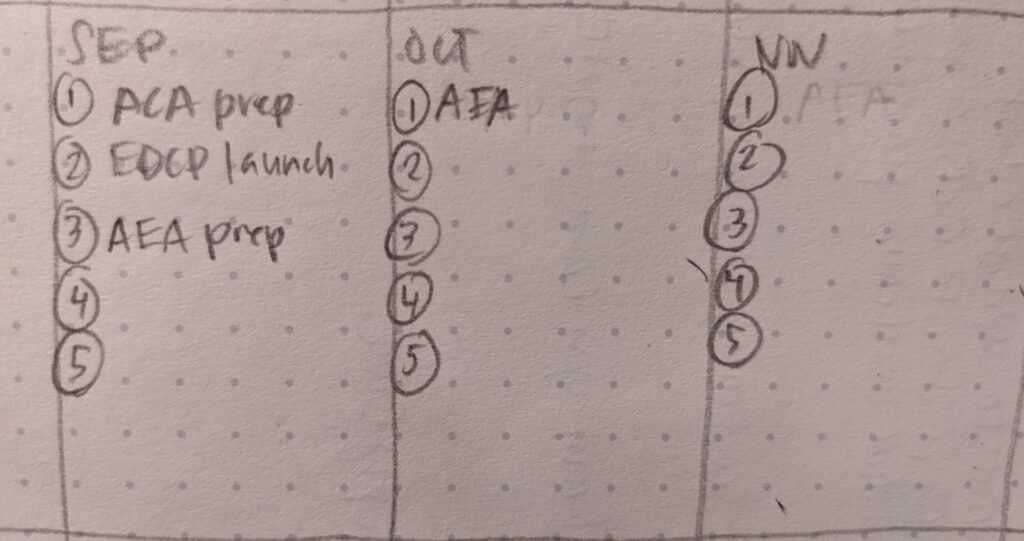
Usually my massive conference is held in November, where I market and network and make new friends and clients and hug all my people. It’s the best.
It’s also a whole project. It typically takes up one spot for November.
But next year they’ve moved it to October.
Which means my prep will happen in September, when I’m getting my talks together and planning the parties I’ll host at the conference. Whew.
September is the same time I’m launching a course and prepping for the launch of another course.
Now I can look at September and recognize, months in advance, that I won’t have much time for paid work. I won’t overbook my September because I can only do 5 things and massive conference prep is definitely one of those things.
This means, if I’m following the 5 projects philosophy, that I have to take on one less paid project in September, in order to plan for one less paid project in October.
Gosh, that conference starts to take on a different sized budget.
Better make sure I’m working my ass off to get the most out of that conference experience.
The holidays take up one spot in December. Not even work-related but it takes up a whole spot. Because the more I thought about this five project limit, the more I realized it isn’t just about work.
Got a fresh baby? That’s one or two spots on every month until your kid is 3.
Dealing with an aging parent? Fill in a spot. Or three.
Old Stephanie would have scoffed a bit at this research. Like “oh yeah the average person can only handle 5 projects, but me? I’m freakin good at this. Bring it on.”
Old Stephanie burned out. Repeatedly.
Health is recognizing the limits of our capacity.
We can put a lot of pressure on ourselves (and each other) to be more, achieve more, ever ever more more. And even if we have wised up to the fact that ever more isn’t sustainable, you’re just left wondering, well, what is?
It’s five.
Now we know.
Ok, ok. One research study isn’t enough to warrant such strong words like knowing something.
But I’m going to run with this framework for a year and see how I feel.
Conversely, some students in Boost and Bloom, who are just starting out on their own, are struggling to juggle more than one project at a time. Like, your brain hyperfocuses on making sure this one project doesn’t go off the rails.
Let this research be an encouragement to diversify your portfolio a little.
Small projects count. The researchers point out that part of the burnout comes from the administrative time and energy to run a project, no matter its size, and the task-switching between projects that sucks your brain.
So for people who only have one project in their laser beam and need to broaden their scope, small projects count.
And for people, like me, who need to rein it in and lower their project number, small projects count.
May we see this restraint as freeing.
In January, my 5 will be:
- A two-day workshop with National Science Foundation
- Dashboard development work with the City of Chicago
- Coordination of a workshop with one of my staff for Centers for Disease Control and Prevention
- Prepping for the re-launch of my one-on-one data viz coaching program, opening in March
- Final prep for re-opening Boost and Bloom (I’m so excited!)
What are your five? Email them to me.
How to Fire a Difficult Client
The first time I had to fire a difficult client, my pits sweated right through my shirt as I was composing, backspacing, and rewording that email.
Look, we’re gonna to do our best to make sure we don’t ever end up in this position, but sometimes you have to fire a difficult client.
I encourage you to do this at the second sign of inappropriate behavior. For the most part, I’ll give people grace on their first asshole comment, late payment, or questionable Zoom background.
But the second time?
Cut your losses and get out.
You don’t necessarily even need to have a clear egregious error. Sometimes you just drift apart. You’ve got a 5 year contract and 2 years in you’ve decided you want to shift your business focus.
Instead of providing a full suite of graphic design services, you’re pivoting into the niche of writing each wedding guest’s name in calligraphy on individual grains of rice that they’ll chuck at the happy couple. Totally cool.
Pivots happen all the time.
The bottom line is don’t do this:
Even if you really really really want to.
When you recognize it’s time to part ways your first stop is your contract. Whip that baby out.
It’s gonna have a section on cancellation. The most common clause I see says that the contract can be cancelled by either party with 30 days’ notice.
Ok, cool.
Email your client and say… whatever you want. But not too much. Unless you want to.
Crystal clear?
My point is you aren’t obligated to say much but if you’ve had a good relationship and want to preserve it, you can provide some detail.
How to fire a difficult client:
You can be as efficient as “Hey there – It breaks my heart to do this but I need to sever our partnership. Our contract asks for 30 days’ notice – please consider this the notice. I’ll continue to give my best on this project in that time and I have someone in mind I’d like to transition you to if you want a recommendation.”
You don’t have to mention calligraphy on wedding rice.
You also don’t need to provide a recommendation if your client is a jerk. Because the colleague you’re recommending doesn’t deserve that behavior either.
If they’ve specifically breached the contract in some way, you don’t have to wait the 30 days either. You just need to point to that clause in the contract, like “Todd, when you commented on the size of my butt at last week’s meeting, it was a breach of the sexual harassment clause of the contract, which is cause for immediate cancellation. I’ll be sending my final invoice over shortly.”
I’ve been in less clear situations where I had to say something like “The ongoing reshuffling of my scope and responsibilities is making it impossible for me to fulfill the obligations laid out in our contract. Further, I need to be able to trust a partnership – that’s how we plan out our business strategy. This partnership is not working for our business model any more.”
Copy/paste these as much as you need.
Take a deep breath and hit send.
And if you’ve loved these folks, consider shipping them a parting gift of wedding rice.
Do not forget to send the final invoice.
Sometimes we don’t review our contracts very carefully before signing and end up agreeing to a clause that’s less fair, like one that says only your client is allowed to cancel. If that’s you, still try one of these options listed above. Chances are that once you convey that you’re unhappy, they’ll also want to part ways.
If you’re screening your prospective clients well, firing a difficult client will be rare (so bookmark this page for when you need it). I have to do it once every other year.
When it happens to you, it sucks but I’m here for ya. Email me and tell me what happened and how they reacted. We’ll get through it together.
Time to Raise your Rates
Hi my dear friend. It’s November. Time to raise your rates.
Your 2023 rates should be higher than your rates today.
Why?
Inflation! OMG I can’t get out of the grocery store for under $100 and there’s just two of us living in this house! Your pay needs to keep up.
The latest inflation rate was 8.2%. If you give yourself an 8.2% raise, you’ll only actually be making the same.
Which means if you don’t raise your rates at all, you’ll be making less in 2023 than in 2022 even if you have the same amount of work.
But also – you’ve learned a bunch in the last year. You’ve got more experience under your belt. You deserve an actual raise.
And now is the time to set those 2023 prices.
If you haven’t already done so.
You need to schedule the time to consider and implement your price hike when you expect to be getting requests for work in the coming year.
Did that even make sense? LOL. Let me explain.
My schedule books 4-6 months in advance. Which means in July I have to start telling potential clients that I can start work with them in January. So, for me, I have to schedule my thinking time to review and recalculate my rates in July each year.
If you’ve already got some folks on your 2023 calendar, don’t panic.
Just raise your rates right now.
Now is about the time for many people in the consulting worlds where requests for gigs start slowing down. November and December are usually quiet.
As soon as the second week of January hits, you’ll have a flood of emails from folks looking to work with you. And you’ll be ready with your new rates.
Those of you who have a busy season in November and December might not have the quiet gap where you can introduce a new rate and that’s ok, too. Just put up a sign that says “Heads up, lovely customers. Our 2023 prices have increased.” You can do this.
Here’s how my massage therapist announces her new rates:
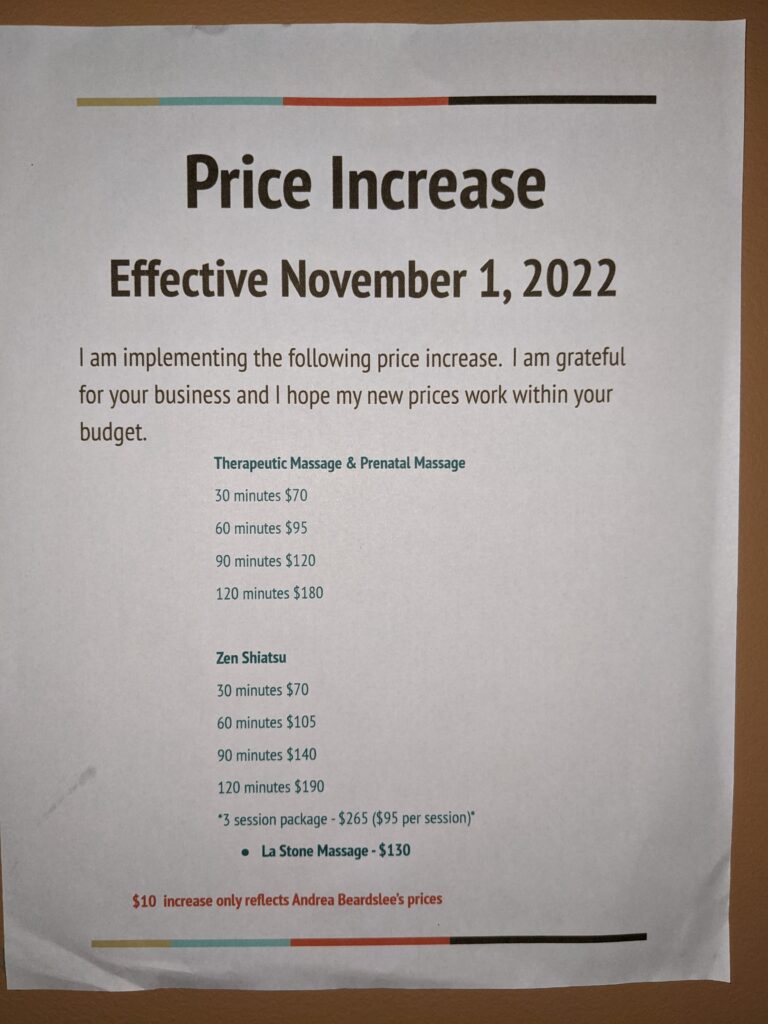
She just posts a sign with the new prices, well in advance of when they’ll take effect.
It can feel really scary to raise your prices, as if you’ll turn off potential clients. I’ve felt that way 13 times (for 13 years of business). Guess what? Clients just keep coming.
To help you get over this hurdle, here’s what you’ll do.
Write this out in a google doc: My 2023 rates are ______. (You fill in the blank.)
Then you’ll just copy/paste that into a email for 2023 work. Much easier than having to type it out. The rate is already committed in writing.
In fact, let’s get over the first hurdle together. Email me with your 2023 rate sentence. I can promise I won’t freak out or have sticker stock. And that’ll make the second time you copy/paste that much easier.
Business Boundaries
I live a couple blocks from the world’s best pizzeria. I count it among my many blessings. The owner, Rich, has perfected red sauce. He hires neighborhood kids. He’ll donate a dozen pies to any local charity that asks.
So why does he have reviews like this, from Lauren C who lives in the “theater district” in Manhattan:
“I have never been treated so poorly by the owner of a restaurant or any employee. I will never be back and recommend you avoid this restaurant at all cost.
“The food does not compensate for the horrible attitude and hostility of a mean man.”
I have a pretty good guess, because here’s what happened to me, many moons ago.
I asked for my salad dressing on the side. My server said, “I can give you no dressing. I can give you a ~whisper~ of dressing. But I can’t put your dressing on the side.”
Um what? I’m feeling kinda Lauren C right now.
My server explained that the chef carefully constructs each dish, which is meant to be consumed as a whole, not as individual parts. It’s like a piece of art. You wouldn’t ask an artist to put all the yellow in a pot on the side of the painting.
In other words, this restaurant has integrity. They know their food is amazing. They know what makes it amazing. And they don’t mess with the magic.
That’s called having boundaries (and I suspect Lauren C isn’t used to facing boundaries).
Boundaries are how you maintain the integrity of your work.
Most of us don’t even consider business boundaries. That’s how we get scope creep and asshole clients.
You can recognize missing boundaries when you put together a proposal for a client and the client comes back with a list of tweaks they want to make to your package and you say yes.
You say yes because you want the money and the client and the opportunity. What you trade for the yes is the integrity of your plan.
The thoughtfulness and experience you put into the creation of a package of services that you know will serve this client the best.
You lose your voice of wisdom – which, as a consultant, is one of your most valuable assets. It’s why you attracted this client in the first place.
How successful will this project really be if your voice of wisdom can be pushed back and questioned?
Of course – partnership is important and that will always require some discussion and collaboration and the lovely unfolding of new ideas. It’s your job to recognize when your client is treading into your area of expertise and crossing a boundary.
When you let your boundaries get crossed, you’re not a consultant, you’re a freelancer.
Rich’s expertise is Italian food. Lauren C’s expertise is not Italian food. Rich has every single right – and I would even say *responsibility* – as the expert to say what can and cannot be changed to maintain the integrity of his food.
And so do you.
Granted, Rich is a white dude, which comes with a level of privilege that likely makes it easier for him to tell a customer no, to risk a bad review on Yelp.
But Rich can also bet on the fact that his work is so flippin good that all of the 5 star reviews saying this is the best pizza on the planet will overshadow the Lauren Cs of the world.
And so can you.
Focus on constructing amazing packages for your services. Produce extraordinary results for clients. And your reputation takes care of itself.
Business boundaries start like this:
I don’t….
We only…
Our focus is on…
My policy is…
Finish one of these sentences and email me with your business boundary.
Just Start
I’m gonna pre-apologize right now. Cause this post from Sun Yi’s Instagram is so accurate, it hurts.

Let’s say I want to buy a house in Portugal. It’s been a lifelong dream and I finally feel like I’m in a place in my life where it could reasonably happen soon.
I’m absolutely not jumping on a plane and flying to Lisbon and buying the first house I see.
I’m going to read up on the rules of international house buying. Join an online ex pat community and listen in for advice on fun neighborhoods. Talk to my family.
Then – and this is THE MOST IMPORTANT PART – I’m going to start a conversation with a real estate agent in Porto. That’s when it gets real. And that’s the step we put off.
Because there’s always more research to be done. Another influencer with the one tiny tip that’ll make or break you – better keep scrolling. Right?
Honey, you’ll scroll your whole life away.
The difference between being a wantrepreneur and an entrepreneur is in the balance you strike between researching and doing.
Stop researching and go get a client.
How?
How does anyone get clients? You sell yourself. Talk about your work. Reach out to people who need your services.
That’s when it gets real.
Real scary.
“I want to be an entrepreneur, but I’m scared it won’t work. I’m scared I can’t do it.”
For reals. Those are true legitimate feelings that don’t fully go away, ever. It IS scary.
Now that we’ve settled that, can you view fear as that annoying colleague down the hall and just do your work anyway? Todd in Accounting as been training you for this for years.
There’s just no other way around it. Put yourself out there and focus on getting clients first. You’ll figure out everything else as you go.
“I don’t know what steps are involved – better read yet another CEO’s book.”
Everyone’s path is going to look differently but the one thing you can trust is that, once you start walking, the next step will be revealed to you.
I had just a couple clients under my belt when a prospective and I were emailing back and forth and she said “This sounds great. Do you have a website I can show to my team members?”
No ma’am I do not. But I’ll have one up tomorrow.
The next step shows up at your feet if you just get started.
You build it as you fly.
“I need a lot more experience first.”
Um, how do you think you get experience? You have to go get clients.
You might be thinking, who wants to work with someone so new? You wouldn’t want a surgeon on their first surgery, would you?
I don’t know about that. The best cleaning I ever got was from a dental hygienist who had just graduated. She was well-researched – no one could know more about the most current best practices. And her freshness made her sooooooo careful and detailed.
Listen, your experience will perfectly match someone’s budget. Just go find your someone.
So yes, of course, you need to do some research. But instead of thinking that there’s a research phase and then a doing phase, think about researching and doing simultaneously, back and forth, onward. Both at the same time.
If you want to actually reach those big dreams – that house in Portugal, that business empire, that award-winning YouTube channel – you have to switch to DO mode. Contact the real estate agent, connect to your first client, make your initial video.
Yeah, the first one will suck. So get it out of the way as fast as you can.
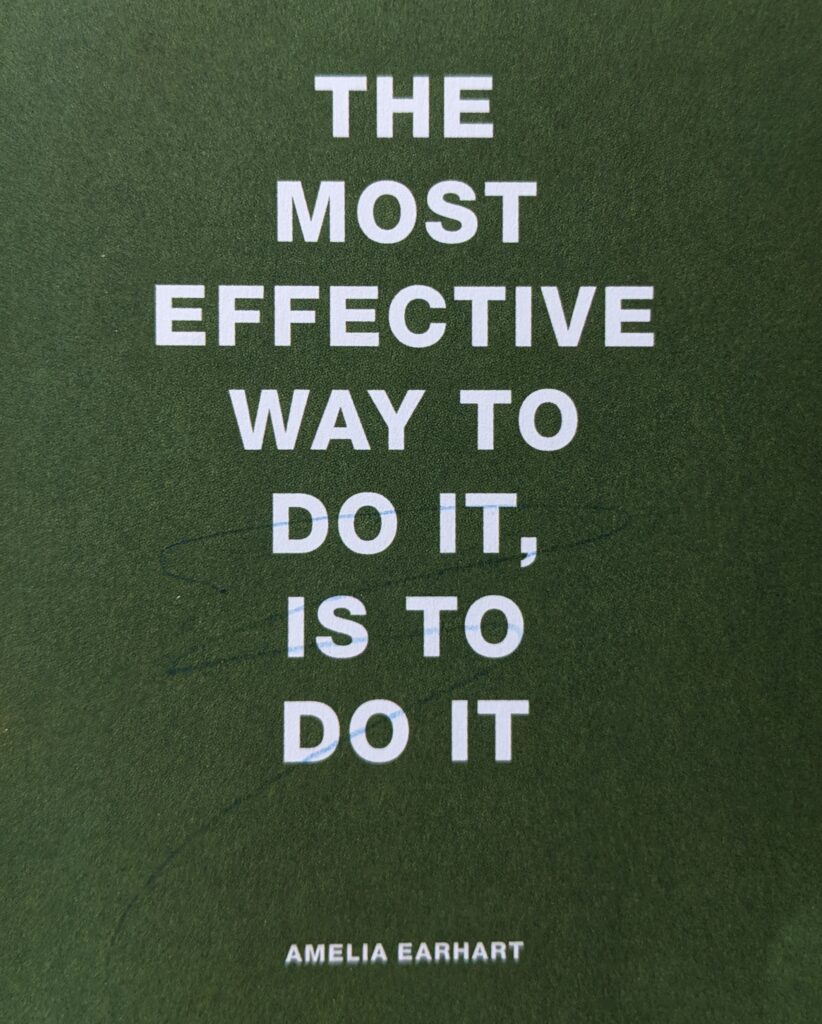
So, what’s the next big thing you want to do? The thing you’ve had your heart on but haven’t actually *done* yet? Hit me up for a little pep talk.
When to Disappoint Others
Here’s a story about first time I got a gig through LinkedIn.
Jennifer worked at a ~~ prestige beauty company ~~ and needed a consultant to revamp the 100-slide PowerPoint about the state of the prestige beauty industry for their upcoming conference.
I said yes, even though (1) the deadline was tiiiiiight, (2) I don’t really love doing this kind of design work, and (3) I don’t know jack about the prestige beauty industry.
The pay was structured as a flat dollar amount per completed slide.
Jennifer sent me the deck from last year that “just needed to be updated” (famous last words).
Each slide had at least 100 different elements on it – dozens of textboxes in 4 point font, photos arrays of expensive neck creams. I very quickly saw that the reasonable dollar amount per slide was going to equate to far under minimum wage, with all the work it would take to redesign even a single slide.
I spent a whole weekend in my office, cranking out remakes according to what I knew to be best practices for slide design.
Sent it off to Jennifer Sunday night.
She freakin hated it.
Her email was something like “this is not prestige, this is not elegant, this is not beautiful.”
That hit me like a gut punch.
I took another shot at it, still without any real idea of what prestige, elegant, and beautiful would look like to Jennifer.
I’m sure I fell short. I sent off the next draft, which, at this point, was like the day before the conference. I never heard from Jennifer again, despite my follow up emails.
I had disappointed her.
The right time to disappoint her would have been back when she slid into my LinkedIn DMs. I should have said no. The project wasn’t a good fit. The answer should have been simple.
Or, I could have asked for a sample slide so I could get a sense of the scope of the work. I woulda opened the sample slide, laughed out loud in my office, then politely declined the job – disappointing her.
What do those two opportunities have in common?
They come before the contract is signed.
The best time to disappoint someone is before you sign official paperwork.
We risk damaging our reputation and wasting everyone’s time and energy when we don’t engage in a thorough discovery phase before we ink signatures.
In order to honestly engage in a discovery phase, you’ve gotta know what work you will and won’t do. What lights you up and what’ll be a slog. Who you love to work for and who you don’t need to support.
Those distinctions are blurry at best when we’re desperate for work or flattered by the ask.
You need clarity about your focus and purpose to enter into a discovery phase. (You also need a list of client red flags to look for.)
Most of us skirt this. Because we want to “remain open to new opportunities.”
But clarity about your focus and purpose brings you strength and confidence.
You might think, what’s the harm? You only lost one weekend of your life saying yes to Jennifer.
Not so, my friend. I lost my time, my energy, and I risked my reputation. And as an entrepreneur, time, energy, and reputation are all you’ve got.
So now I know better. I asked for a sample to get a sense of the scope. It’s part of my discovery process.
Let’s trade stories. How did you disappoint a client, after the contract was signed? And what changes have you made to your discovery phase as a result? Shoot me an email.
What You Call Yourself
In my early entrepreneur days, I looked up to Amy. She owned a thriving one-person consulting business, seemed in a happy relationship, had her shit together. I needed to be like Amy.
So one day I emailed her and asked the super important question: What title do you use?
And here’s what she said back: Principal.
Me: Principal?
Amy: Yep. That’s the official name for someone who owns an LLC.
Me: …
Honey, I come from an education background, so, to me, Principal means a specific person who smiles a lot but is actually judging the way you dismiss your kids to recess.
Even if I switch contexts to entreprenuerism… Principal? There’s no pride in that.
Then I remembered that dear sweet Amy also uses the word “persons” to refer to people. Like, persons of color.
Listen, in some ways, it doesn’t matter what you call yourself.
Pick anything.
Don’t let this part stop you from moving ahead.
On the other hand, what you call yourself can bring you a sense of accomplishment and confidence. It matters.
I tried on Principal for about two months and quickly switched to Owner.
Then **Founder** cause that sounded so much cooler. And accurate. I don’t just own this company, I created it from the ground up.
But Founder started to feel too limited. It didn’t adequately describe what I do, only what I did.
I went through a cheeky phase where I switched seamlessly back and forth between a couple different titles: “The One and Only” and “Heavy Hitter.” I mean, what title could possibly encompass all that I am and all that my business does? Might as well go big.
Heavy Hitter got attention. Prospective clients would message me on LinkedIn with compliments on the chutzpah behind that title. Damn right.
Instant swagger.
Ok but then I was signing contracts with Fortune 500s with the title Heavy Hitter. I felt like I was just three 12 year olds stacked up inside a trench coat trying to pass as an adult.
Now I sign contracts with CEO right under my name. CEO. That’s what an official adult would call herself on formal paperwork.
On social, I switch up my titles from time to time. Usually, this is a strategic move to focus on whatever initiative I’m promoting at the moment. Like when I open up the Data Viz Academy twice a year. During those times, my title is “Founder, Evergreen Data Visualization Academy.”
Your title can change depending on your current marketing strategy.
You aren’t limited to one title.
I just politely request that you don’t call yourself freelancer.
So, hey, what are you calling yourself right now? Drop me an email with your current title.
Staff job titles are also important.
So before we wrap, let’s address this too.
The positions you create in your company aren’t just for you. They’ll be fulfilled by humans who will need to know what to call themselves, too. Humans who will at some point look for other employment and will list their role in your company on their resume.
The name of the role on their resume will be a factor in the salary the next company offers to this lovely human who worked for you.
A person with “Senior Research Associate” is going to get a higher initial offer than someone with “Junior Associate” or just “Staff” (because you never gave them a title).
It’s a revolutionary act in this world to create titles that accurately reflect the skill and experience the position requires such that your staff person is on the best footing possible when they leave. Doubly important for people of color and white women who have historically been underpaid, undervalued, and underpromoted.
Everyone at Evergreen Data is a Senior something.
Titles are a big deal. And also a small deal. Change it as much as you want.
How to Make the Most of a Conference
I made a very expensive rookie mistake. It started back in 2019, so I can’t even blame the pandemic.
I had my sights set on a new-to-me conference taking place in Europe. The conference theme was about climate change and I proposed a short talk on how data visualization can save the planet. (Of course, I’d have to fly across the Atlantic to attend the conference on climate change and the irony isn’t lost on me.)
The conference organizer pulled an unusual move – she contacted me directly, saying she loved the topic and wanted me to extend the talk to 90 minutes and then also give a second 90-minute talk on how to choose the right chart type. She promised they’d cross-promote both talks in the program and it’d be a big deal.
Here’s where I made the expensive mistake, one I didn’t even recognize until a few years later when the conference finallllllllly happened.
I added up her request – 2 90-minute sessions – and told the conference organizer something like “Sounds like you want me to give a half day workshop for free. No thanks. I’ll stick to my single paper presentation.”
If you aren’t a regular at conferences, you should know that a single paper presentation is going to be lumped together with a few other random papers and you’ll all share a 90-minute time slot, each person getting maybe 10 minutes to present. It’s crisp.
I should have told the conference organizer that I would meet her in the middle and present one 90-minute session.
Because when I got to the conference, after two years of postponement, I did what I always do: I scoped out the presentation room early. This is what I found:
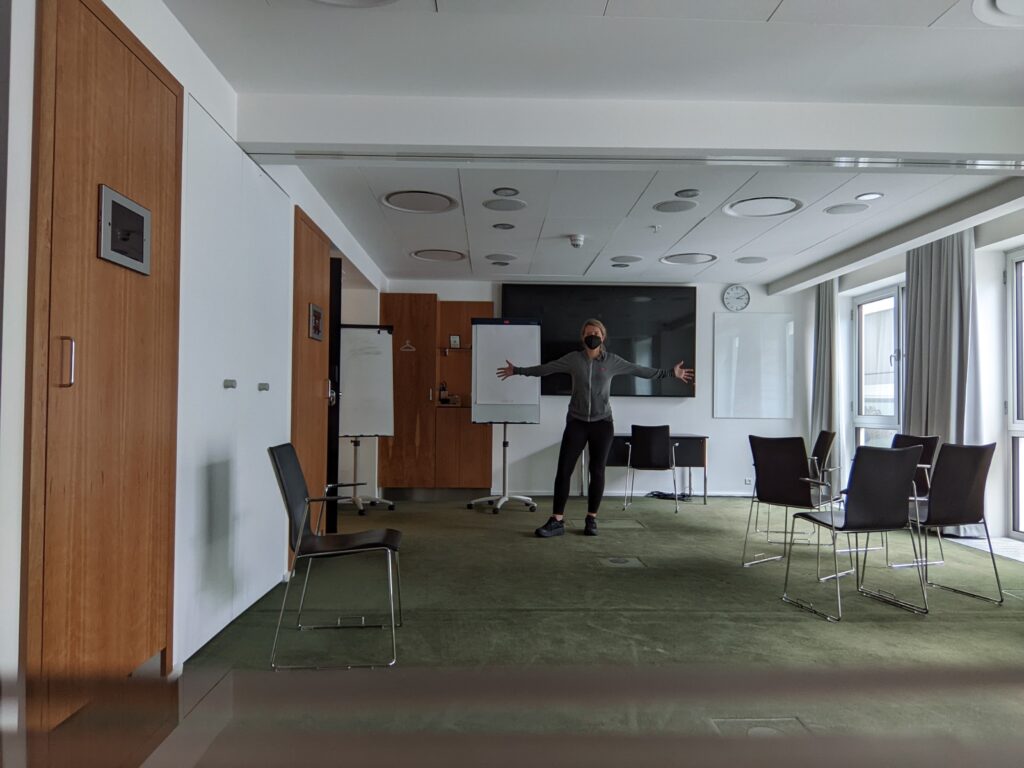
It was pretty small. But ok. I guess. I was estimating maybe 30 people when the chairs get in place.
The next day I show up for my talk and oh child….. the conference had put up a divider wall in the room I’d scoped the day before. In actuality it had 12 seats.
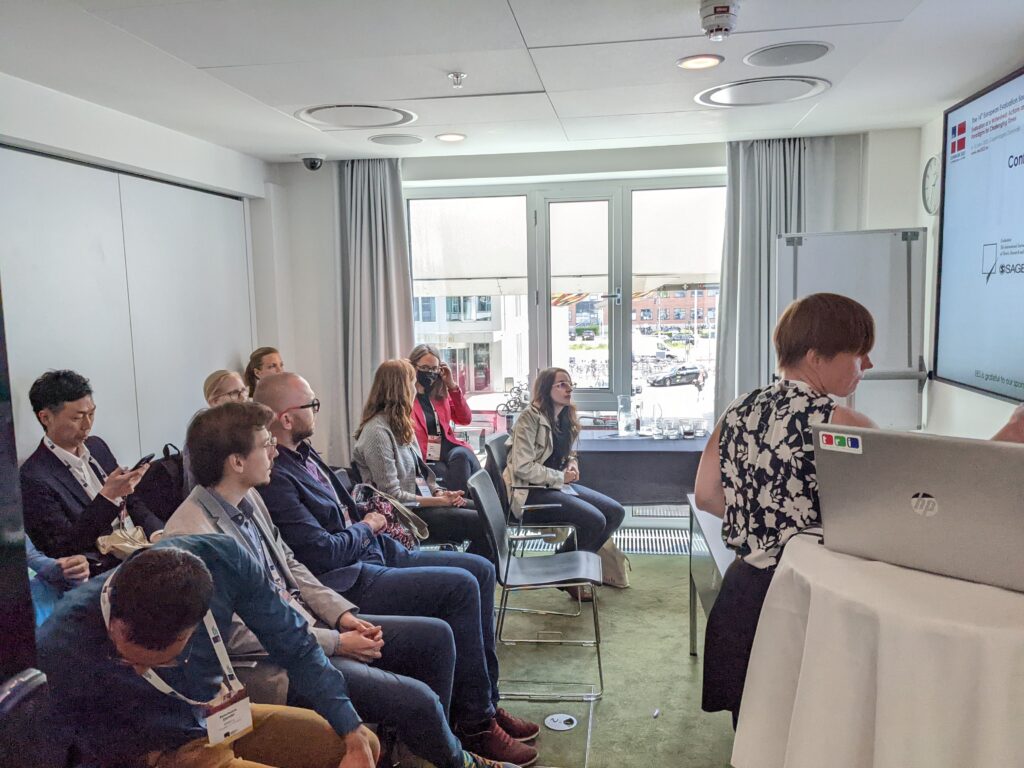
5 of which were taken up by the presenters of the other papers grouped into my session.
Yes, I flew across the Atlantic in a first class lay down seat (a promise my CEO gave to all my employees years ago for overseas flights) to present to 7 people.
Such an expensive rookie mistake.
The hallway gathered people hoping to snag a seat. At which point, the conference organizers pushed out an incredibly timed notification to everyone’s phone saying you can’t sit on the floor or gather in the hall because of fire code.
Are you thinking this conference organizer had it out for me because I accused her of trying to milk me for a free half day workshop?
The thought also crossed my mind but rather than be paranoid, I’ve done a very American thing and pulled out the big time lessons I learned from this experience so that you don’t end up in this position, too.
Lesson 1
Always pitch a 90-minute session. Anyone reading this has the ability to pull off a 90-minute session. That includes you, Honeypot.
Now that I’ve gone through this experience, I can look back over my history at conferences and see that organizers generally put longer sessions in bigger rooms. I got so used to big rooms, I didn’t even consider anything else.
When you pitch a shorter, paper session, you’re lumped in with other papers, and people are less likely to attend because they may not be interested in sitting through a hodge podge.
And, at least for this conference, the only thing listed in the program is the name of the whole session, some mish mash of words the conference organizers invented. Which means it didn’t say the name of my paper. It didn’t even say my name. You’d have to know I was at the conference and go through the work to search on Evergreen in the conference program to find me.
Paper sessions get lost. Zero visibility. Go for 90 minutes.
Lesson 2
Ugh this one hurts to write down and hit Publish.
I was eating my feelings with takeout pizza and wine in a paper cup, canal-side.

When I realized: I had assumed I would be put in a big room because I’m a Big Name.
I keynote conferences FFS.
People pay me, regularly, to fly across the Atlantic and teach them the very things I was saying here, on my own dime.
Don’t these people recognize?
<insert sip of wine>
Oh crap… that’s my ego. Hi, old friend.
<insert big gulp of wine>
That’s the unexpected reality check I didn’t know I needed. I’m a Big Name to some people, but I’m a total stranger to others.
So now I know: Stay humble. And pitch 90-minutes.
What about you? What’s your conference strategy – as a presenter or as an attendee? What’s helped you make a conference worth your while? Write to me and let me know.
The Scott Whisperer
Scott used to be my boss. He was, to put it mildly, weak on vision, mission, and listening. Like – the things a leader has to do well.
It would be one thing if his tunnel vision and out-of-touch mindset led to new heights for the company. But he’s the one who told me data visualization was a quickly passing fad and that he wouldn’t support my budding interest in this new field. I quit pretty fast thereafter.
My friend we’ll call Meghan is the only one in the office who could navigate working with/around Scott. It’s been over a decade since I worked there and Meghan has been on his team every one of those days.
Me: “Meghan, I don’t know how you’ve survived all this time. He doesn’t listen. Isn’t that frustrating?”
Meghan: “I just figured out how to make it seem like my good ideas were his good ideas. And then I remind him about his good ideas later on when he gets distracted.”
Meghan is The Scott Whisperer.
She’s learned how Scott’s brain operates and devised a method for operating within Scott’s world.
(Hold on, I’m pushing aside my criticisms of patriarchy and power dynamics…. Whew. Ok.)
Meghan’s insight as The Scott Whisperer has reaped benefits. She’s the only one he can really partner with. He’s given her increasing responsibility and moved her up in pay and position. Being The Scott Whisperer has had its benefits.
What do you whisper?
You’ve got something you can do better than anyone else.
Me? I’m the Dataviz Workshop Whisperer. My workshops are better than anyone else. Other people might make better graphs or know the insides of Tableau better than I do. But my workshops are the best.
I know I definitely can’t be the best at everything. Though it took my perfectionism a minute to figure that out. So I focus on what I’m realllllllly good at and I dropped the other things from my suite of services.
Work in your zone of genius, however niche that might be.
You’ll find the most fulfillment here. You’ll be able to charge a premium here. You’ll have little competition.
Oh, you like fresh challenges?
I know some folks who think that sticking to what you whisper isn’t interesting enough. Not enough juice.
Those folks are Challenge Whisperers. Embrace it. That’s your zone of genius.
When I was a kindergarten teacher, I marveled at the folks in my district who were successful with high school students. Cliques and snark were not my thing. My 5 year olds thought I was a magic fairy princess and I liked it that way. Bless those who are High School Whisperers.
Fire Whisperers are the ones running into the burning building while everyone else is staying far away from the flames.
Hospice Whispers know how to find the words that choke up the rest of us.
What about you? Your personal combo of traits, experiences, and joys come together to make you the very best at something. And that’s why, even though it might seem like graphic designers are a dime a dozen, you’re different.
Even if you think there’s nothing new under the sun, as if it’s all been said before, you’ll say it in a new way, to new people, who can only hear it from you.
The Three Part Pitch
Trish had been trying to land this dream client for over a year. In that time, she’d sat through many meetings, co-creating a scope and work plan. But, especially after a change in leadership, the group was adrift in thought and Trish was working without a contract.
Trish needed a three part pitch.
When you start to get the sense that you are being strung along – even unintentionally – take that as a sign that it’s time to propose a three part pitch.
When your clients can’t quite seem to crystallize their thinking, that’s your cue to write a three part pitch.
I’ve used this successfully in two different styles, so I’ll tell you about both. They have a common and important characteristic: The three part pitch is you taking control of the situation and suggesting a formal plan, in writing.
You bust this out when someone, anyone, but especially you pulls from your wisdom and experience to be a leader and set the ship on its course.
Pitch Choices
Choice A is the one the client thinks they want. You know what to write here because you’ve listened to them so much and those conversations include gentle (and not-so-gentle) suggestions for what they believe you should do to solve their problems. It’s usually incomplete or totally incorrect and you can say that, nicely, in your pitch.
Choice B is what you think they actually need, based on your previous work in similar situations and what you know, if anything, about their budget.
Choice C is what you would ideally do if money was no option. It’s more than they asked for and solves problems they didn’t even know they had. It’s a stretch. But it’s here to make Choice B look more reasonable.
Spend no more than 1 page writing up each choice.
Pitch Phases
Phase A is a first step on the project. Sometimes that involves just writing up the plan for the next phases. Sometimes it includes a formal assessment of the scope of the problem to be solved. Or a mini solution to a baby problem as a pilot to determine what to do next. It’s a small commitment to test the waters.
Phase B is an expansion of Phase A that is often to be determined.
Phase C is an even larger expansion of the above.
These often have time frames associated with them but costs may not be spelled out beyond Phase A because you don’t know what you’ll be getting into yet. But Phases B and C are in the proposal so your potential clients can see a road map without making a price- or scope-based commitment just yet.
I have used the phased approach when I’m not 100% sure the potential gig is actually viable, fun, or good for me. It gives me the option to back out if Phase A is a circus.
But it puts a future on paper so you have something to refer to later on when it’s time to talk next steps. It keeps folks from getting foggy again.
Trish went with the phase approach.
Why It Works
The pitch comes in three parts because people like options, but not too many. Too many options leads to analysis paralysis and that’s the LAST thing a group in this state needs, after they’ve already been in the fog for so long.
The pitch works because people need to see something in order to react to it. They need to see the shape of the idea (and the price tag associated with it) in order to make a decision, one way or another. Even if they reject all three parts, at least you got to an answer and can move on with your life.
The three parts of the pitch intentionally cover a range of commitment levels so that even if the group is only ready for a bite-size step, you can take it with them. Under contract. For pay.
The three part pitch puts you in a guiding, leadership role.
If you use one of these approaches, email me and let me know how it went.
Do you know someone who could use this advice? Send them this link to get on my newsletter list, too.
Friendship Folders
“Hi Stephanie, I’m Yan. Nice to meet you.”
“Hi Yan. Tell me, what’s the scariest choice you made in the last three years?”
Awkward, right? This is why it’s hard for me to make friends. The light, fluffy, small talk is a challenge for me. I don’t give a crap about the weather. I just want to dive straight into the deep end.
I once (accidentally!) made a new friend cry when I asked why she and her partner had chosen to never have kids. I admired their life of adventure. But, yeah, perhaps our second time hanging out was too soon.
My StrengthsFinder results are high on action and meaning. One of my very lowest strengths (ok, I guess that’s called a weakness) is Woo. I just can’t.
But woo is glue. It’s the stuff that cements connections and, in the business world, makes clients into friends. Or at least friendlies. Who want to work with you again and recommend you to others because you’re a freakin joy to be around.
Woo is how you make people feel special.
And I really do want that, even if I have to consciously strive for it.
So let me tell you about the new woo strategy I’m trying. Sorry for the sharp turn we’re about to make to get there.
My best friend’s father just passed away. He was a veteran with a purple heart. He started a police academy in a part of Michigan that needed standards and training. And even though we only saw each other a few times a year, he’d ask me about details in my life that I was surprised he remembered.
After his death, my best friend’s brother was looking through their father’s iPad. They found out how he did it.
He kept Friendship Folders.
There was one for me. It was called Stephanie Evergreen (Karen’s friend). In my folder, he had notes about my life. Things he’d picked up in the course of our conversations. Like
- Son is Byce. High schooler. Likes video games and science.
- Runs her own business. Travels a lot. Data stuff.
- Lives in Kalamazoo. Downtown. Historic home.
- Married May 2020 to Michael.
Even if six months had gone by, he would roll up at Karen’s birthday party and chat with me about historic home repair or where my travels have taken me while we down cake and ice cream.
He made me feel like he cared about me. He knew how to woo.
It might not be a tuck jump off the high dive into the deep end of life’s mysteries but it was way more meaningful and relevant than the weather.
I’m adopting Friendship Folders.
Especially for my business contacts. I can be so focused on the work that I forget to make human connections. My emails can be like “Contract attached.” LOL.
I know people are dropping little details about their lives because I respond to them in the moment but I forget them the moment we x out of Zoom. I believe I can build better relationships if I create a Friendship Folder as soon as I get off the call.
How do you Woo?
For some people, this comes so naturally they probably haven’t even really thought about how they woo. They just do.
Do you have some strategies that help you make woo glue? Write to me and tell me about them.
How I Almost Killed My Summer
I’m gonna be honest, I crushed the start of 2022. I launched a new program. People swarmed my Data Viz Academy course. I was holding private webinars weekly. So by the end of the Spring, I was toast.
That’s when my therapist said these words, the ones that unlocked joy in my heart: Why don’t you take the summer off of writing newsletters? Rest, sister.
Look, I love writing newsletters and sharing my hard-won lessons and hearing all about yours. But too much of any good thing is gonna hurt.
Y’all wished me a wonderful summer and I spent it in the sunshine, going to concerts (New Kids on the Block / Salt n Pepa / En Vogue, Billy Joel, Lake Street Dive), singing Take Me Out to the Ballgame at minor league baseball, prepping the barn for my upcoming wedding reception, and traveling Europe while dodging COVID and monkeypox. Sure, I rested too, just like my therapist prescribed.
But here’s how I paid people to ruin my summer:
I’ve been struggling with one of my online courses. Enrollment numbers weren’t where I wanted them to be. The program is really labor-intensive, so even though successful students stunned me with their talent, I’d have to raise the price significantly to keep it in operation. I wasn’t totally sure how to fix it – or whether to just ditch it.
So I hired consultants.
Who took a day to audit my program and sent me ELEVEN FREAKIN PAGES of feedback.
Whew. Ok. I wanted this, I reminded myself. I asked for this. I paid for this.
Cause I know some of you are also interested in building online courses, here’s a quick, paraphrased, rundown of some of the feedback:
Change the name of the program
Rewrite the webpage
Develop freebies
Create an ad campaign to trade the freebie for emails
Create landing pages for the ad campaign
Create emails for people who got the freebie
Develop a free class to deliver when enrollment opens
Create ads for the free class
Develop incentives for waitlisters to enroll early
Write more emails to the waitlist
Create an application process for interested students
Change the onboarding process for new students
Open up enrollment for the waitlist weeks early
Start emailing the waitlist July 11
Those are the highlights, my friend. I’m not even getting into the details. Or the accompanying Loom video breakdown. They were, shall we say, thorough.
I have unwavering faith that I can do all of these things.
It woulda just killed my summer.
Email the waitlist July 11? That means I’m spending June on my computer instead of cold plunging into the Copenhagen canal.
Just because you can do something, doesn’t mean you have to. Right now. Or ever.
Matter of fact, I decided to skip the revamped launch of the course this Fall. I’m postponing the next enrollment period for that course until next Spring. I’m gonna need all the time between now and then to implement the consultant recommendations without burning myself out.
And that Spring enrollment period will be do or die. If the changes don’t result in a profitable program with higher enrollment and happy students, I’m shutting it down. I promise to report back.
The Achiever in me was thisclose to figuring out a way to make it happen.
Writing emails from the beach or something. There are people to help. But there’s one more lesson in here I wanted to pass on to you.
I was discussing whether to rally around this Consultant To Do List with my family. We’re stuffing our faces with miso soup and boogie veggie rolls.
My partner shoves an entire piece of sushi into his mouth (as you’re supposed to do) and says:
“You busted your tail at the start of the year so that you’d have free time right now. You kept saying, to yourself and the rest of us, ‘I know I’m working all weekend, but this means I’ll have a lighter load this summer.’ And now you’re talking about filling up that space you created with more work.”
I woulda kissed him right on the lips, except his mouth was full of sushi.
He’s right. I had totally forgotten about the promises I made to myself when I was up to my elbows in January. It’s very much like me to fill my free time with more work – a habit I’m trying to unlearn, cause I’m tired of burning out.
Every one of us needs somebody in our corner, reminding us of what’s in our best self’s best interest.
So who’s in your corner, rooting for your success and your rest? Me, for one.
And how’d you spend your summer? Hit me up with your favorite non-work-related summer activity.
Signs You Can Quit Your Day Job
THE LEAP! The leap feels so big. Quitting your day job to launch your own empire is full of so much anxiety, fear, curiosity, hope, and thrill.
Most of us aren’t equipped to sort through that many emotions, all happening at the same time. It’s like the Jungle Juice from your college years. And most of us weren’t equipped to handle that either.
So, while there’s no one path to entrepreneurship, let me help you sort out when you’ll know you’re ready to take that leap.
Money & Insurance
The biggest burning questions I get in my DMs are fears about money and insurance.
If you’re in the position to stay in position, do it. By that I mean, if you’re able to stay in your day job while you grow your empire on the side, that’s the most stable situation. Yes, it’ll mean you’re sacrificing some nights and weekends but if you’re just rewatching Breaking Bad again, you won’t lose much.
When you’re earning 75% of your day job salary through your side empire, you’re in a position to walk.
I mean, I walked without having much lined up. People do it all the time. But ideally you’ve built enough of a bridge to make the leap more like a hop.
You only need to get 75% of your salary covered because once you take the leap you’ll have a lot more time on your hands for business development to get you to 100% +.
The + also includes covering your insurance, which is probably the #1 block for people in the US who have to suffer through employer-based insurance programs. It’ll become a cost of doing business. You can handle it. But now’s the time to research how much you’ll be paying and add this cost to the list of expenses you’ll incur regularly (you’ll use that list to help you figure out your pricing).
Thing is – people get jungle juice feelings about money and insurance but it isn’t the first thing to sort out.
Offer/Service/Product
What the hell do you sell, Honey? You have to start here.
What do you offer in exchange for money? Usually it’s some kind of product or service. To make a successful leap, you’ve gotta articulate exactly what you sell and package it up in a way that potential buyers can clearly understand.
It’s one thing to say “I’m a stylist and I’ll tell you what to wear.” Dime a dozen.
It’s waaaaay more attractive to say “I’ve got a curated box of clothes in your size and style that I’ll mail to you once a season.” THAT I would buy. It’s packaged. Ok, literally – a box of clothes – but conceptually too and that’s the more important part.
And even more important than that is the underlying mechanism you develop to actually deliver the offer. You can’t just *say* you sell a box of clothes, you have to actually set up the processes by which you’ll find out what customers want, establish relationships with stores, think through the packaging (physical this time – the cardboard box you’ll mail).
You need the idea, plus the processes to make the idea happen. Figure that stuff out first.
Client Demand
The second thing you need in order to quit your day job, right after the idea and process, is the clientele. Almost everyone has their first clients long before they get their first logo.
Client demand can start out small – like, you told your idea and process to a friend, who told a friend, who wants to work with you now. Even if you aren’t ready yet, that counts as client demand.
If you find yourself saying no to some potential work because you’re out of hours in the day, that definitely counts as client demand and that’s how you know you can walk… or leap.
(By the way, I used these same signs to help me navigate my process of cutting out some income streams that I don’t like and leaping over to others that bring me more joy – uh, like Boost & Bloom. This ain’t just for the newbie entrepreneur.)
A strong, sustainable empire will also require branding and marketing and systems and strategies and you’ll build all of that as you go. Don’t worry about it now. Just get product, demand, and money sorted out and you’ll be ready to quit your day job.
Being Strung Along
The thing about being strung along by a “potential client” is that you often don’t know it til it’s too late. Let’s look at what happened to a couple of my students and let their hindsight become your foresight.
No work without a contract.
Sometimes we make it easy to string us along. Like when we agree to work we wouldn’t normally do, for the promise of a future contract.
One of my previous mentees (let’s call her Trudy) accidentally set herself up for being strung along. She realllllllllly wanted to partner with this organization. It woulda been a big fish to add to her portfolio.
In her early conversations with her point of contact at this org, they seemed super eager to work together. So much so, that the client asked Trudy if she’d be willing to jump in on some small tasks (warning sign #1) at a low (warning sign #2) hourly rate (warning sign #3).
Trudy didn’t know me then, so she said yes. The client said it would just be temporary while they write up the bigger contract and get it in place.
Did Trudy ever advance beyond low wage task labor?
No my friend she did not.
And she was too embarrassed about the scope of her work there to ever include this client in her portfolio.
The client doesn’t know what they want.
Another student of mine (code name: Blanche) got stuck in a months-long string-along with a potential client because of “decision by committee.”
Similar to having too many cooks in the kitchen, decision by committee is an excellent way of slowing progress to a casual stroll through I Don’t Know What Do You Think Land. Have you and your partner ever entered into starvation because neither of you could decide what you wanted to eat for dinner? Like that. But with ten partners.
Blanche had a typical initial meeting with this client to lay out the possible solutions she could offer to the problems they were experiencing. They seemed to have come to agreement about the way forward. Blanche went home and waited for a contract.
And waited.
Blanche checked in but by this point, the finer details of the conversation had been lost, so the potential client asked Blanche to write up the plan in a proposal (note to Future Blanche: Write and send the proposal immediately after the initial meeting.)
Blanche sent the proposal and waited.
And waited.
When she checked in again, the potential client said the team needed to really think about whether the proposed solution would solve the right problem. Could Blanche meet with the whole team and help them talk through their problems?
I’m gonna skip to the end of Blanche’s tale: Blanche dealt with so much waffling you’d think she could open an IHOP franchise. This client liked the idea of working with Blanche (or, at least, of having a consultant) but couldn’t ever make a decision about where to start.
I actually suspect they didn’t have the funds to invest in the right solutions but didn’t want to say that to Blanche’s face, so they just let it playyyyyyy out.
Look, some clients really do take months of nurture before the project comes to fruition and you get that sweet contract in your hands. You’ve gotta relationship build. They’ve gotta convince some team members to swipe right on you. Procurement processes and vendor onboarding – the creepy evil twins staring at you blankly at the end of the hallway of consulting life – can take a long, long time.
You’ve gotta learn how to tell the difference between when they really do need time and when they’re stringing you along. Here’s how I tell:
Check-ins should advance the plot.
If you’re not hearing a reply after you send a check-in email, wait a week and send another. We all have those weeks from hell where we can barely breathe. But if you don’t hear anything after the second check-in, move on with your life.
When you do get a reply, it should include some decision or action or next step with a date attached to it.
Like “My team and I have a meeting to discuss this project next Tuesday and I’ll get back to you then.”
or “I have a few more questions. Can we schedule a Zoom to discuss?”
These are check-ins that advance the plot.
If your check-in gets a reply like “Thank you for checking in!” or “We’re still thinking about it.” you’re being strung along and it’s time to walk on by.
Client Red Flags
“What would the price be if we took out the graph makeovers?”
When I hear this question, I run for the hills. I’ve learned to recognize this request as a giant red flag.
This question reflects a potential client who is gonna be a complete PITA (while most business acronyms are ridiculous, this one is important: Pain In The Ass). And I do not want to work with PITAs.
Just like I didn’t want to date jerks. It can be hard to know who’s a jerk at first, right? Everyone’s got maximum charm and best behavior at the beginning.
But once you get burned, you (and your friends) look back at those seemed-benign-at-the-time comments like “I’m such a feminist – I love women!” with fresh eyes. Hindsight teaches you to recognize red flags.
Same with clients when we get burned.
Collect the lessons and form a red flag checklist.
We each have to DIY our own red flag list. But let me seed yours, ok? The question a potential client posed at the top of this post about what the price would be…. that’s nickel-and-dime behavior.
Here’s what isn’t: “Do you have any government or non-profit discounts?” That question is harmless.
First of all, it’s common. Many places DO offer government and non-profit rates.
Second, I respect the fiduciary obligation to inquire about a deal. I get it – we’ve all got budgets. Doesn’t hurt to ask. Reminds me of the way my grandma looked her budtender right in the eye and asked if he had a senior discount. The chutzpah.
But this question: “What would the price be if we took out the graph makeovers?” is different. It’s saying “Even though you’ve developed a well-thought-out workshop package designed to increase our data visualization capacity as much as possible, can I take it apart bit-by-bit?” Nope.
You don’t have to listen to my experience, if you’re interested in playing with fire.
Let me tell you what happened after I said YES one time. YES, we can take out the graph makeovers and lower the price. You know what came a week later?
“Well, what would the price be if we took out access to the Data Visualization Academy, too?”
Run, my dear.
Because the next step will be a request for an hour-by-hour account of your work.
And not only is that a nickel-and-dime situation that breaks the high-quality package I’ve pulled together, it’s micromanagement. This client is gonna be a PITA.
Yes usually comes from a place of fear. No comes from a place of strength.
It isn’t worth the pain.
My friend Toby made me write down my dating red flag list. He’d pull it out over IPAs in the pub, when the occasion was right. When I was about to make a bad decision and repeat a mistake.
You may need to do the same for your client red flag list. Share it with someone else who can keep you accountable to the higher standards you’re setting for yourself. Write to me with your list and compare yours with that of another entrepreneurial friend.
Your red flag list is how you create boundaries. It’s how you generate an empire where the atmosphere is respect. It saves you from stress headaches and new gray hairs. It’s peace.
Find Your Edge
When you have the trazillion dollar marketing legacy of McDonalds behind you, your franchise does NOT need to find your edge. In fact, you want to be cookie-cutter-right-off-the-factory-line samesies as every other McDonalds franchise because customers expect a consistent experience no matter which McDs they roll into.
But when your town has more Mickey Ds than elementary schools, you’ve got competition. The franchise holder down the road is hoping the post prom crowd is going to use his spot for their Tik Toks and french fries and the corporate McDonalds doesn’t care which franchise they visit because it’s still cash in their pocket.
So, my friend, if you want to build your empire, you’ve gotta find your edge. Make yours a Rock-N-Roll Cafe.
You ARE Different
It’s just that you haven’t thought through exactly how you’re different.
It doesn’t matter what industry you’re in – you could be making bespoke broaches for cats – you have competition. Even if you think you’re soooooooo unique. Don’t forget: Sometimes your competition is your potential customer’s choice to do nothing. To not buy. Who actually needs a cat broach?
In other words, your market is crowded, whether you like it or not.
The way to stand out is to find your edge – the thing that makes you unique and different. The cinnamon caramel in a world of vanilla ice cream.
You won’t be everyone’s favorite flavor but you’ll be some people’s go-to, no-questions-asked, extra sprinkles top choice.
Edgy Can Mean Contrarian
Stirring the pot is one of my all time favorite activities. As early as third grade, I was organizing my classmates and mounting campaigns that questioned the status quo. That is, I was every teacher’s most troublesome student (sorry, not sorry Mrs. Jones ❤️) and student hero of the week for getting that English test cancelled in 11th grade.
Questioning the status quo is a part of my constitution. While it still takes some pluck and therapy, it’s what led me to publish blog posts like this one, this one, and this one, which get me emails of admiration and DMs of venom to this day.
To find your edge, list what’s accepted as “common sense” in your field and examine it through your own unique lens. Look for the holes. Talk about them.
It takes a good deal of privilege and a strong support system to buck a trend on Twitter. Some people don’t have the social safety to speak up like that.
But here’s the thing: Contrarian doesn’t mean you have to be cranky, snobby, and up late at night smashing out snarky responses in the depths of the comment thread on your blog. In fact, when your industry is full of cantankerous men cracking at each other online, doing the same makes you vanilla. The contrarian move would be kindness.
So, my Cinnamon Sweet, what’s your edge? Bust out your business journal and write down 5 things that make you different from the others in your field. Then write to me and tell me what they are. We’ll put bells on them and celebrate.
Books Are Not Lucrative
My editor is in my inbox. Again. She gently prods me a couple times a year about writing another book. Or updating an old book. Or writing anything besides newsletters, really.
I’m so resistant.
Writing a book was such a “Should be on my bucket list” notion back when I was in grad school. Before I published a book. Before I knew how much work it would be.
When I was contemplating whether to write it, I was in Indianapolis at a dinner for the keynote speakers of a conference. I was deliberating about this with another keynoter, who told me “Books are your best business card.”
He handed me a copy of his book (yes, he carried copies).
He explained that the book itself won’t make you much money.
Royalties are crap.
Way more recently, I saw this tweet, which validated that things haven’t changed much since then.
By contract, my royalty payments amounted to 14% of sales. Just 14%. For writing the whole damn book (and doing most of the promotion, I might add).
So Mr. Keynoter was saying that the book won’t make you money. But it will open the door for bigger opportunities. You’ll be invited to give keynotes and workshops. You’ll be asked to consult. You can immediately double or triple your prices.
All of those things are 100% true. Publishing a book will not make you rich. You aren’t Stephen King. You don’t get advances. You’ll wait years – literally – after signing the book contract before you’ll see your first royalty check and it’ll be nice but you can’t quit your day job on those dollars.
Writing a book makes you more visible. So if it’s something on your bucket list, the moment you send the manuscript to your editor, you need to start preparing the services (workshops, keynotes, etc) you’ll sell to your new audience.
Books aren’t lucrative.
The opportunities you get from publishing are.
Of course, not everything has to be lucrative. You can write for the pure joy. You can write because you have something to share with the world.
But you don’t need a book to do those things.
See, Mr. Keynoter was advising me at that dinner back before social media became A Thing. Before anyone could start a podcast or a newsletter and grow a following of thousands. Pre-Tik Tok.
15 years ago, books may have been your best business card but now your social media could be even better.
If you want to write, start writing.
Don’t wait for the book deal. Your social media or blog or podcast will likely be the thing that attracts a publisher anyway. So just get to the writing.
Your writing, no matter where you do it, will open up opportunities that make you a lot more money. Writing a book takes months to years of intense focus, patience, and organized thought. Most people underestimate the amount of time and energy required. If you put the same time and energy into your podcast/newsletter/Tik Tok, you’ll get the same opportunities.
If, after reading all of this, you still want to write a book – awesome. Prepare for the opportunities. Get your promotional house in order. Keep writing – that online course, that pitch deck, that story for Forbes.
Once you see that career growth doesn’t come from the book itself, but from the promotion and offers that stem from the book, you might even consider a popular route among many authors I know – self-publishing. Where you keep 100%, not just 14%.
When You’re a Threat
I’ve gotta tell you about the *funniest* thing that happened to me at work in 2021. I mean, in the whole entire year.
Let me set the stage:
My team was hired to help a group of scientists redesign their go-to graphs and, in fact, their entire PowerPoint template. Their main audience was other scientists so the bar isn’t usually very high in these cases but lemme tell ya, they needed help.
I wish I could show you what their slides looked like before, but I’ve gotta protect the innocent.
As we do in all design projects, we developed a handful of options for design directions and had a Zoom call to walk through and talk through the strengths and shortcomings of each possibility.
These folks were suuuuper drawn to the direction that included icons for each section of their talk.
Totally cool. Icons can be fun.
But then came the real work: Getting them to agree on each icon.
I say this with all the love and humor in my heart: Leave it to a group of scientists to totally overthink the meaning held in each icon choice.
Bless the hearts of all nerds, everywhere.
The Great Icon Debate led to a few more Zoom calls, where we’d decide on a finalist for some sections of the PowerPoint and, for others, they’d send me back to the icon ocean to fish for more options.
Third or fourth call that included icons on the agenda and lemme tell you what went down.
We’d been walking through some of the icon choices they needed to make for the first half of the call.
I wrapped up the deliberation by saying “ok why don’t we move on and you all can decide about these icons on your own and get back to me.”
And someone who had her camera off and thought she was muted yelled out “BECAUSE YOU’RE OBSESSED WITH FUCKING ICONS!”
On a work Zoom meeting. In front of 10 of her colleagues. Including her boss.
I couldn’t control my face.
Her colleague on the line said “What was that?”
And the sailor suddenly found the mute button. I can only imagine their sheer horror.
I AM STILL CHUCKLING ABOUT THIS. IT’S BEEN MONTHS.
Aside from being a hilariously human moment, there IS a business lesson in here.
It took me a second to see it because I had to catch WHO, exactly, had gaffed so well. It was the in-house graphic designer.
Now can you decipher what was going on?
I’ve witnessed this situation before (though this was the funniest instance, by far).
In the past, it ended up revealing that the unhappy staff person was not really frustrated with the topic at hand. More so, they were unsettled by the fact that they had the skills to do what I was doing and weren’t pleased that there was an outside consultant brought in.
Underneath that coulda been a turf / ego protection mechanism.
Or it coulda been that this person knows a lot more about managing an icon discussion than I do.
Or it’s possible the project made them feel like their skills aren’t where they should be and this, therefore, was a threat to their security.
It’s not really my place to find out what’s underneath. As the outsider, it’s my place to recognize that something deeper is going on and strategize on what to do about it.
I haven’t run into this situation that many times, but I can tell you that I tried:
- Partnering with the internal expert to come up with something even better
- Transitioning the project to the internal expert & staying on hand to be a resource
- Totally ignoring the problem
And I added a point to my Discovery Call Checklist to specifically ask about existing internal talent. Better to strategize how to handle them with my point of contact at the very beginning of the project instead of waiting until the Best Zoom Outburst of 2021 happens.
Ok, let’s trade. What’s the funniest business moment you had last year? I know you remember it. Write back and share. (It’ll stay between us.)
Robin Hood Pricing
Tell me if you can relate to this newsletter reader who wrote:
“I really want to find ways to use my business skills to help my local community and neighbors instead of working 50+ hours a week so a bunch of rich guys in Connecticut can get even richer.”
!!!
I don’t know who the rich guys in Connecticut are, but in my mind’s eye, they look like this:

Is that how people in Connecticut dress? I don’t even know.
This dear reader was struggling to reconcile working for clients who can pay the big bucks while her heart belongs to the local nonprofits and small businesses.
The super pious among us might conclude that the only choices are to cast your lot with your community and commit to a low salary or sell out with Mr. Moneybags and beat yourself up with endless guilt.
Let me offer a third option.
Robin Hood Pricing
When you Robin Hood, you say yes to a few Connecticuts and use that income to subsidize your time working with your locals.
I know, I know. My cheeky “Robin Hood” name is a bit inaccurate. You aren’t stealing anything. You’re doing your job to the best of your ability. And getting paid handsomely.
Which gives you to the space to charge much less for those you want to help the most.
This means you charge higher prices for the work you do in the corporate world (where higher prices are expected).
Robin Hood Giving
To make this all sit right in my soul, I take my approach one step further. Robin Hood Giving.
When I work on one of these helping-the-rich-get-richer contracts, I take some of the profits from that project and give them directly to the local nonprofit that does the exact opposite thing as the big corporation.
Like, when I work with Facebook, I donate to local journalism efforts.
When I work with global credit card corporations, I give to an underground group here in town that provides cash seed money to launch baby businesses – no interest, not even a loan, just cash.
Every time I work with Chick-fil-A, I cut a fat check to Outfront Kalamazoo, my local LGBTQA+ resource center.
One way or another, you can Robin Hood your way through these seemingly irreconcilable duels in your heart. This isn’t an either/or proposition. This is, my friend, is using the power of AND.
Have you ever partnered up with someone slightly (or more) questionable? How did you make it sit right with your soul?
My Epic Pandemic Business Mistake
I hate learning painful business lessons when I’ve been around the block this long. But here we are.
It’s almost two years to the date. I was in Ottawa giving a workshop to a room full of very distracted Canadians. Their phones were buzzing with emails about mandates to work from home, starting pretty much immediately. Their childcare was closing, come pick up your kid.
In retrospect, we should have cancelled the workshop but you know how it was back then – everything was changing hour by hour.
I flew home through the quietest I’ve ever seen DTW, chatting up my verycloseneighbor about how weird life had gotten, as we bathed our seats in Purell, maskless.
There was just so much we didn’t know.
Like, what’s this going to do to my business?
Uncertainty is every entrepreneur’s enemy.
I used to spend at least a week a month jet setting from city to city, racking up Delta miles and teaching my heart out. If you wanted to get into my speaking schedule you had to book about six months in advance.
So in March 2020 I was looking at half a year of work that needed a Plan B, ASAP. Nearly every client was happy to shift to virtual work and I’m grateful. My online workshops are totally rock-n-roll, I knew we’d be ok.
But everyone else was at a standstill. I spent afternoons completing puzzles with my teenager instead of negotiating new contracts.
Though I didn’t know it at the time, as I was finding the corner pieces, anxiety about my future was on the rise.
So when the Are You Available emails started rolling back in, I made a rookie mistake.
I said yes to everyone.
Uncertainty breeds desperation.
When I launched my first business, I was definitely desperate to make it work so I said HELL YES to anyone, no questions asked.
You don’t realize it til later but the trouble with the Yes to All Approach is that you lose your focus. You don’t have a clear audience. Your marketing gets murky. And you backbend your offer to make it fit what each client wants, even if you aren’t actually flexible.
In other words, it hurts.
It took me years to finally trust that the work would come and that I could be choosy about my projects (just like I’d always wanted when I was dreaming about working for myself).
I thought I knew better. After all, this is the counsel I had given to the students in my business mentoring course for years.
Find your niche! Have self respect! Set boundaries!
But there I was, in late 2020, giving four talks in one day.
I was quickly back to booking six months in advance. Which meant that even in early 2021, when I realized I’d made a rookie mistake, it was too late. I already had dozens of workshops on the books.
Literally, dozens. In December 2021 I posted this on LinkedIn and then laid on the green shag rug in my office for 20 minutes.
Beyond the risk of losing your niche, saying yes to everyone is taxing to your soul.
Your girl was tired.
If I could rewind to the plane ride home from Canada, I would have (1) put on a mask and (2) assured myself that even if things appear uncertain, the best play is to honor the natural limit of my working capacity.
I 100% respect that this is easier said than done.
Too much business is definitely better than too little.
I’m profoundly grateful that things weren’t worse.
I need, like, just two days where no one emails me or wants anything from me.
^ All of these thoughts ^ co-exist, side by side, in my head.
Here’s to calendar caps and regular naps.
What about you? What was your pandemic mistake? Write back and confess.
Singing into the Ocean
I just made one of my dreams come true. I launched an online course while I was at the beach.
I’ve always wanted to be in such a well-prepared place that I could put some work on auto-pilot while I snorkel with sea turtles and lobsters.
I arrived.
I answered a few emails each day from prospective students who wanted to join the Data Visualization Academy. But mostly I drank mojitos.
You’d think it’d be all sunshine and starfish but I have had a teenager in tow, who was being very teenager-y. Why is it so hoooooooot? Why is there sand evvvvvverywhere?
My teen was (rightfully) irritated after an unexpectedly long and sweaty hike back from an unexpectedly amazing tide pool. How looooooong until dinner?
When I told him it would be another 90 minutes, his mood turned so sour, it would have aged me 10 years had we been making direct eye contact.
We diverted to a beachside bar and ordered pineapple juice (with added rum and mint in mine) to see if that would turn that tide.
It didn’t.
But while we sat on the top of a picnic table, watching the sun set into the waves, I spotted this week’s hero.
Just as the sky was starting to turn colors, this guy at the bar faced the water, turned up the tunes playing in his headphones, and danced in the sand.
He sang along, too – loud enough for us to hear him, even over the ocean waves. I couldn’t tell what song he was singing but let me tell you right now this man was doing something holy.
Even though signs from Kohl’s like “Dance like nobody’s watching” makes my guts cringe, that’s exactly what was happening here.
He didn’t seem to care about the cranky teenager brooding nearby.
He didn’t pay attention to the two young girls ripping around the courtyard threatening to put everyone in their Tik Tok video.
He didn’t get distracted by the cook and the bartender, who were married and in a screaming match.
Dude put on his red LED headphones and jammed.
Just him and the music and the sky and the water.
At the risk of romanticizing what was going on in this guy’s head, let me stop here and pull out the lesson for the rest of us.
Prepare for In the Zone time.
You know The Zone. It’s when you’re in that coveted state of flow, where it’s just you and your task/project/focus. Where time passes without you knowing it. That’s The Zone I’m talking about.
It doesn’t just happen by chance. Being In the Zone is a result of how you set up your circumstances.
Like, this guy needed to be at the beach. At sunset. With his headphones. And his playlist. He wouldn’t be singing into the ocean without those ingredients. He came ready.
What circumstances do you need to prepare for your In the Zone time?
For me, I need my mornings. After a cup of coffee and a meditation. With my phone on silent and my social media tabs closed. That’s when I’m at my best.
Because I know that about myself, I don’t schedule meetings in the mornings. I protect the time when circumstances are most favorable for being In the Zone. What takes me a half hour when I’m In the Zone would take me 90 minutes in the afternoon.
What works for you? Write to me and tell me.
I also gotta point out:
he didn’t over-engineer the circumstances. He didn’t demand to be surrounded by silence and good vibes. He didn’t sweat a lot of what could have been distractions.
It’s really easy to find reasons (excuses) for why you can’t just get to work. This is why people have the most beautifully decorated home offices but generate zero income. Time to stop shopping for succulents and publish that website.
We tend to prop up a goal of perfection so that we look productive without actually producing. Actually producing means that people will see our work. And they might point out our flaws.
Next time I find myself lacking the courage to do something I know I want to do because I’m too scared of what my peers on social media will think, I’m going to recall Jam Man on the beach in St Croix, doing his thing.

